
The 4th International Symposium 2023 by the International Research Center
for Color Science and Art
10:05-10:55, March 4, 2023 Tokyo Polytechnic University
10:05-10:55 Spatial color mixing and color illusions 
Akiyoshi Kitaoka (Psychology, Ritsumeikan University) email Abstract
Self-introduction
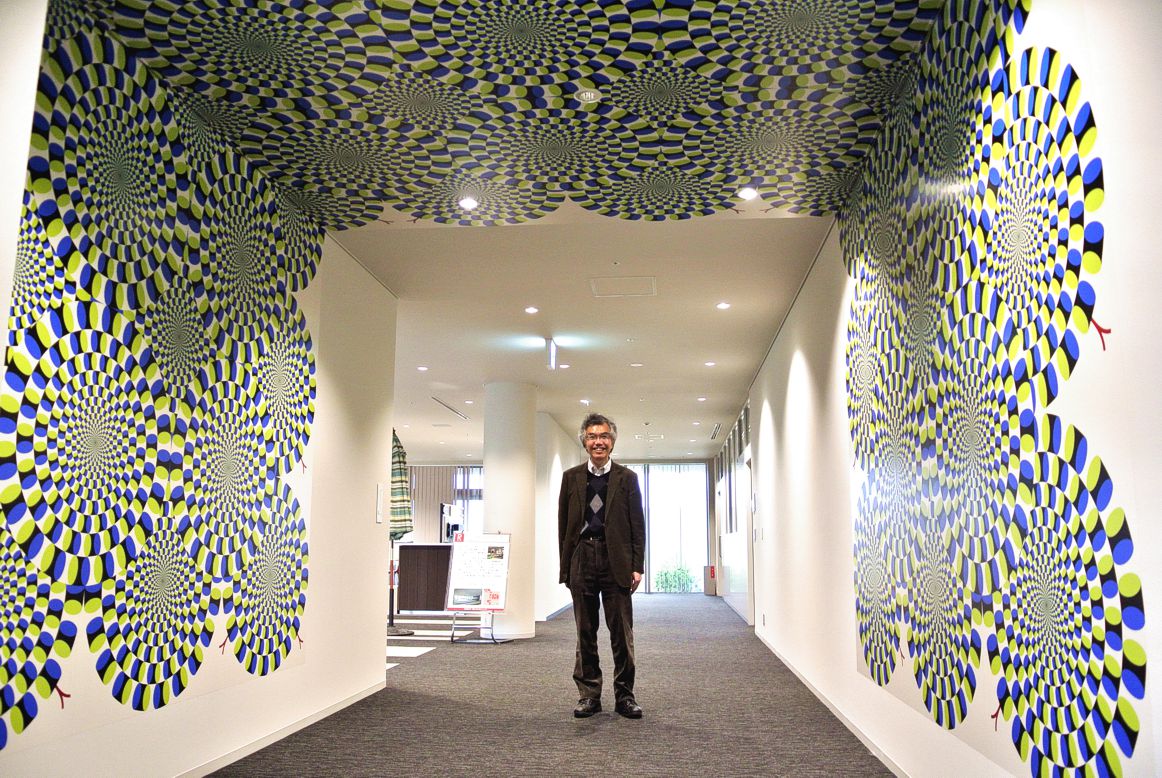
Born in Japan, in 1961. I am a psychologist studying perception. My research is in vision, especially visual illusions. Today I will talk about color illusions. Thank you for inviting me.
I am sorry I do not speak English very well but I will do my best.
Illusion 1: Illusory reddish Coca-Cola can
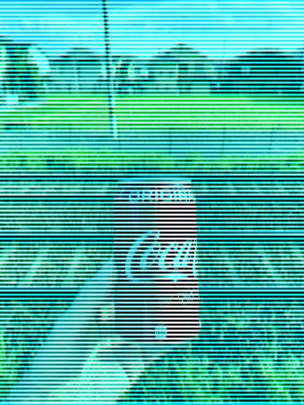
This can appears to be reddish, though the image consists of black and white stripes.
Copyright Akiyoshi Kitaoka 2021 (October 13)
Expanded emage
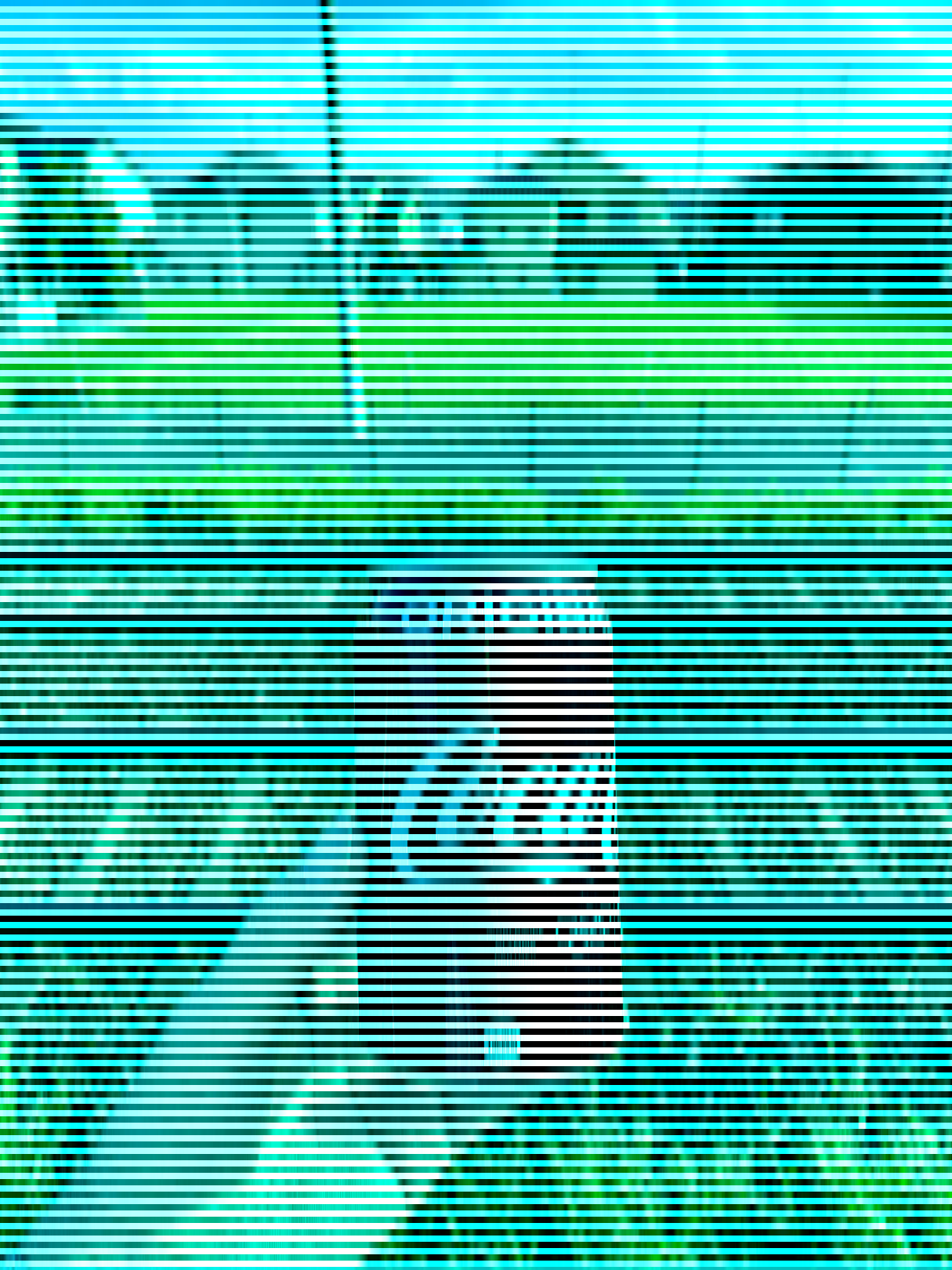
Illusion 2: Illusory yellow
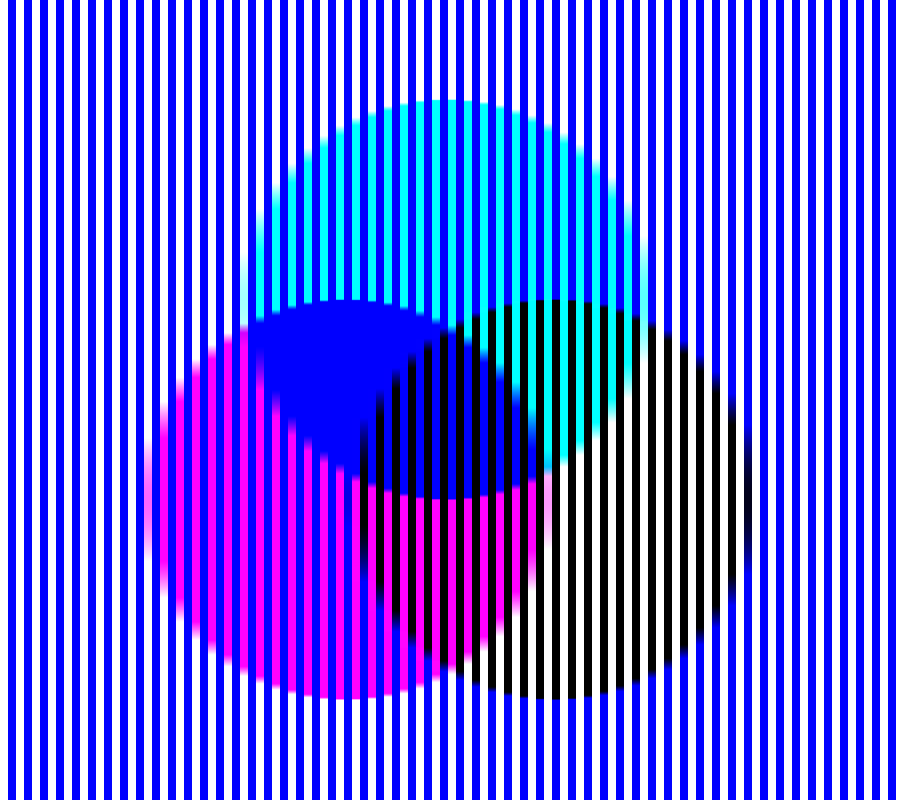
Illusory yellow is observed in the lower-right disk, but the color is white.
Copyright Akiyoshi Kitaoka 2021 (June 12)
expanded image
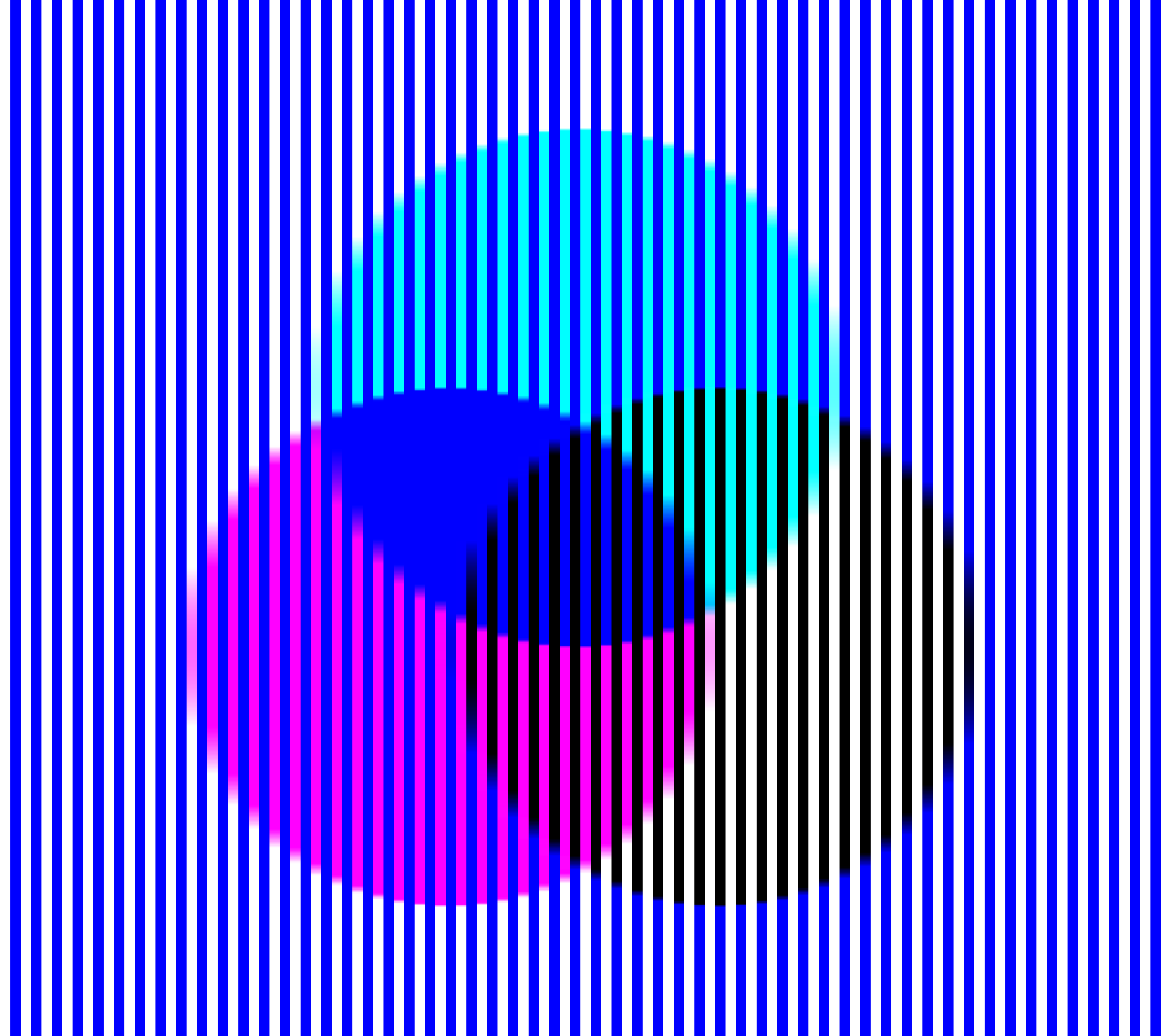
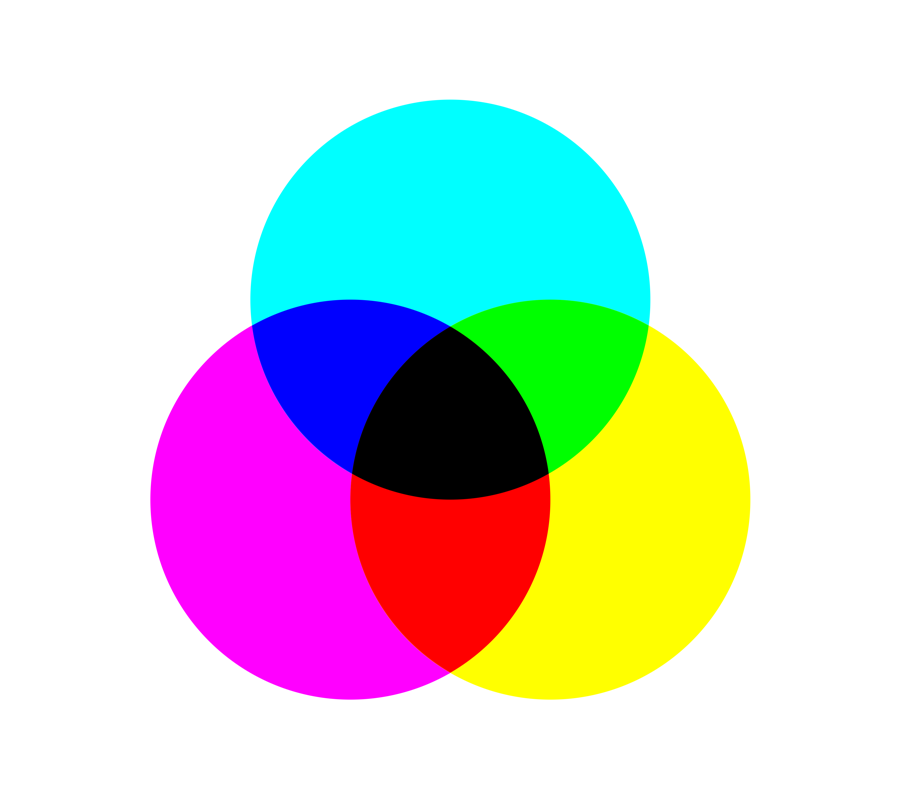
Original image
Illusory yellow is perceived. pic.twitter.com/8jgjQglo0v
— Akiyoshi Kitaoka (@AkiyoshiKitaoka) June 12, 2021
Illusion 3: Illusory colors made up of black and white stripes
Eyes appear to be chromatic, though they consist of black and white stripes.
Illusion 4: RGB stripes produce white or black
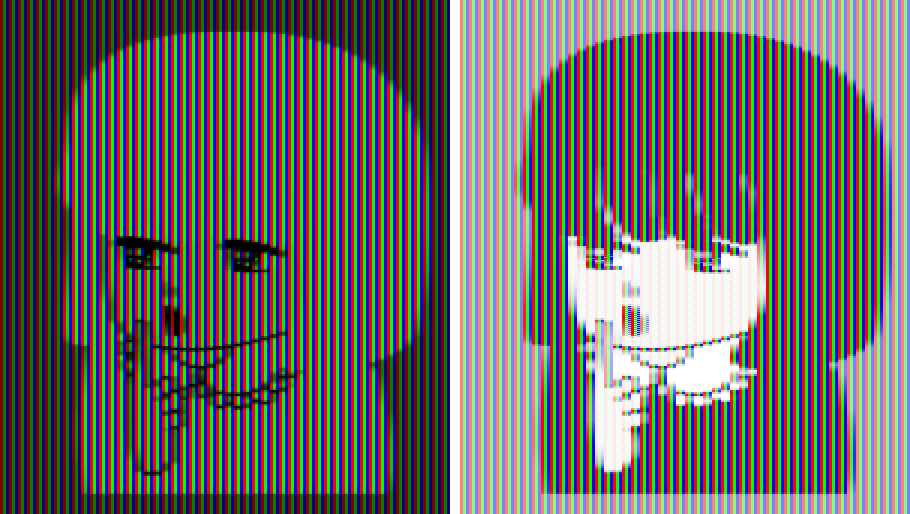
The hair and clothes in the left image appear white while those in the right image appear black. However, they are composed of the same red, green, and blue stripes.
Copyright Akiyoshi Kitaoka 2016 (August 15)
Enlarged image
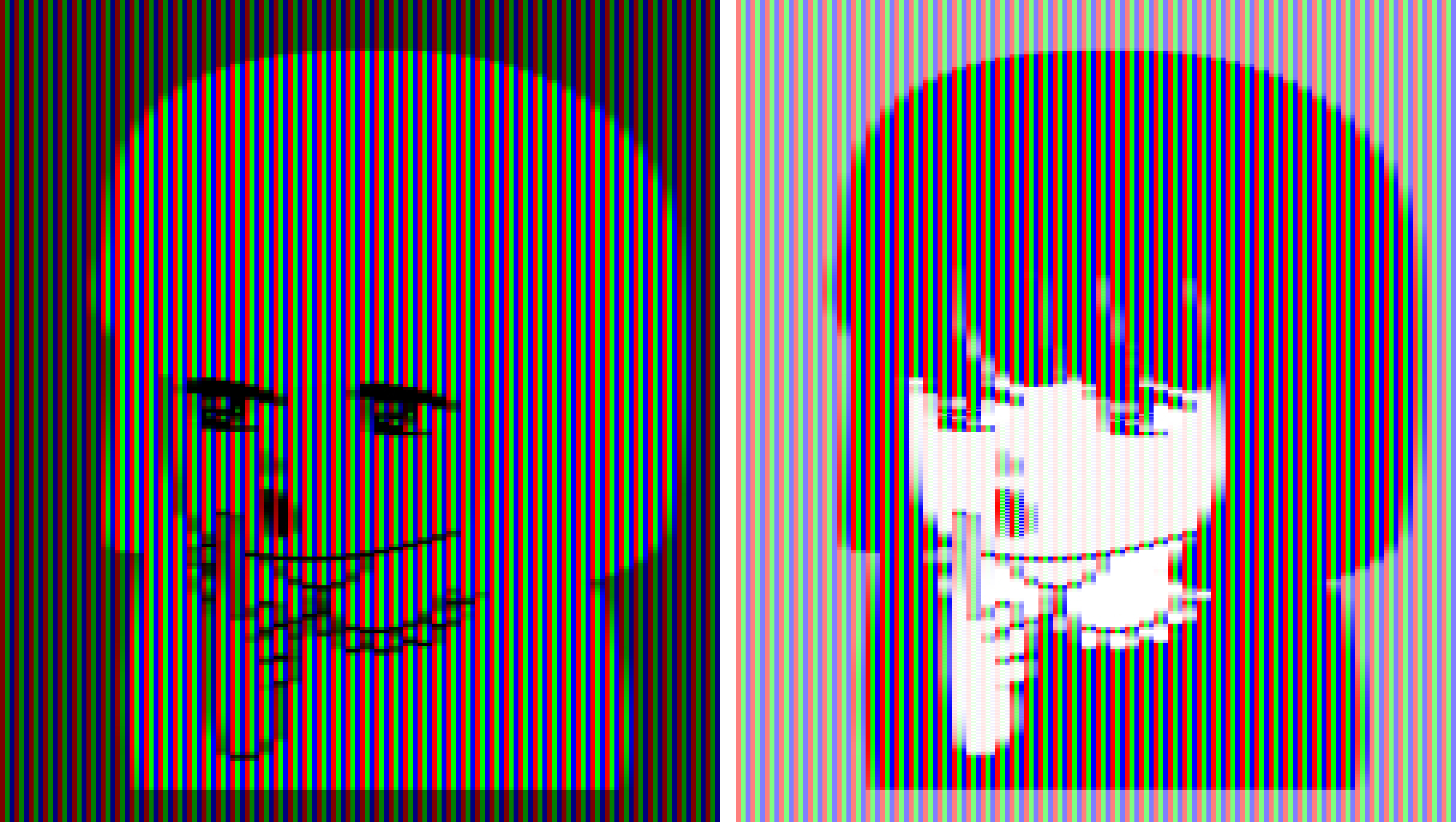
The original image
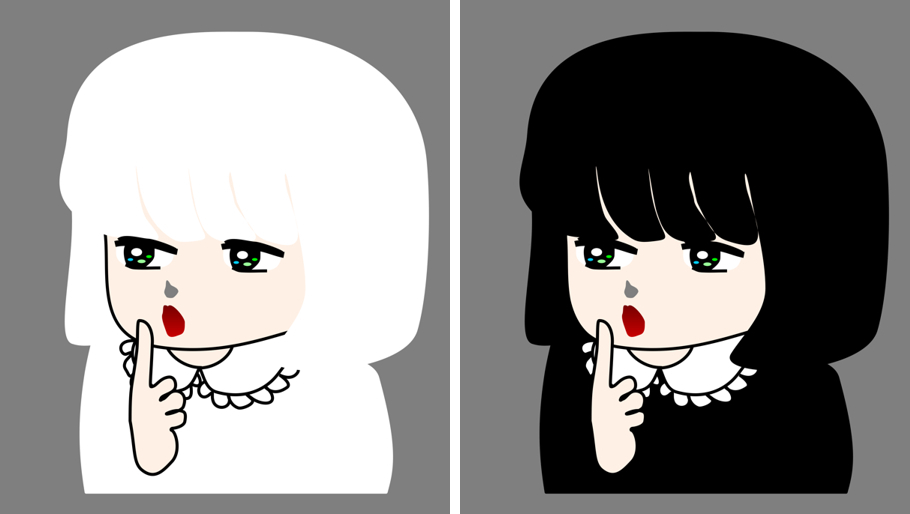
Movie demo
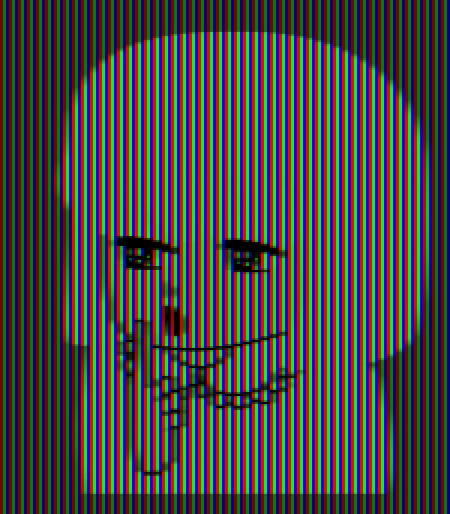
cf.
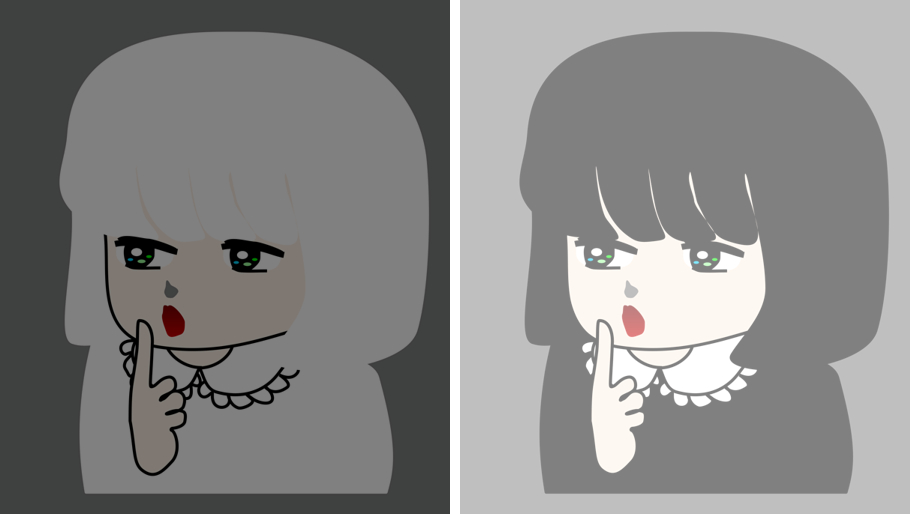
The hair and clothes in the left image appear white while those in the right image appear black. However, they are the same luminance. This image is equivalent to the RGB image in terms of average luminance, so these images demonstrate lightness illusion or lightness constancy.
Copyright Akiyoshi Kitaoka 2018 (May 28)
Illusion 5: Munker illusion
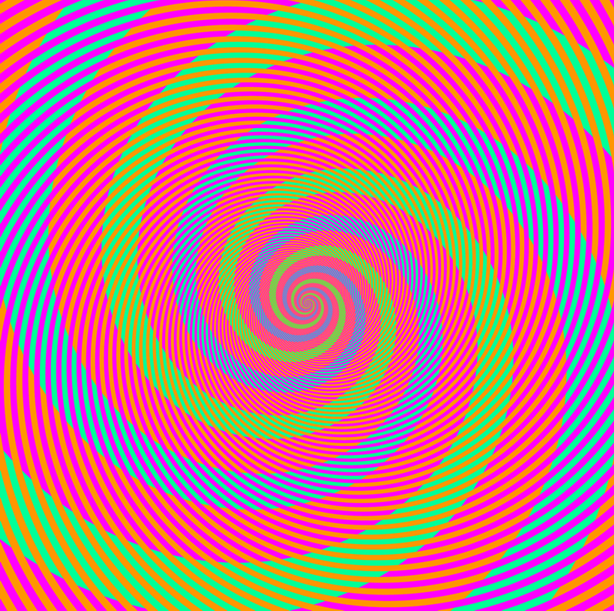
There appear to be a light blue spiral and a yellowish-green spiral, but
both are the same color (R = 0, G = 255, B = 150) .
.
Copyright A.Kitaoka 2003
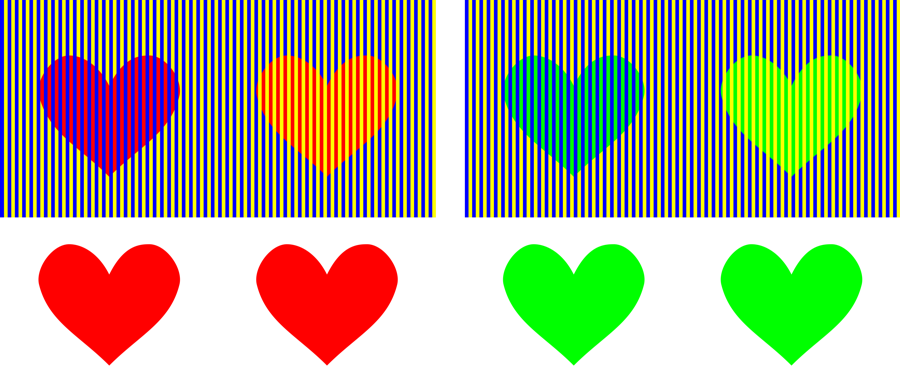
In the left block, a red heart appears to be magenta or orange. In the right block, a green heart appears to be cyan or yellowish green.
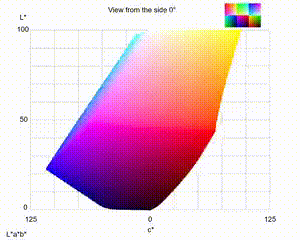 In this presentation, I will talk about a framework that can explain the
above illusions in a consistent manner.
In this presentation, I will talk about a framework that can explain the
above illusions in a consistent manner.(1) Two types of color mixing
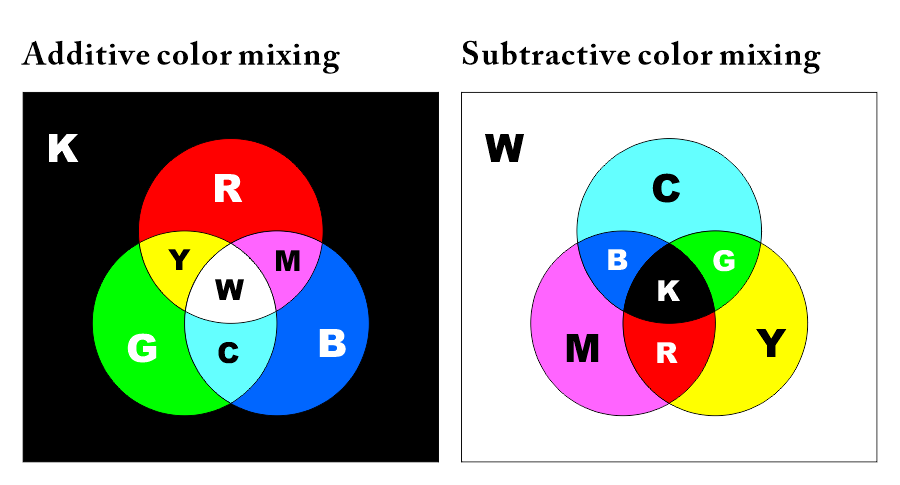
There are two types of color mixing: additive one and subtractive one. In additive color mixing, the primary colors are red (R), green (G), and blue (B). In subtractive color mixing, the primary colors are cyan (C), magenta (M), and yellow (Y). (K = black, W = white)
(2) Two types of spatial color mixing
In spatial color mixing, there are also two types of color mixing: additive one and "subtractive" one.
Original image
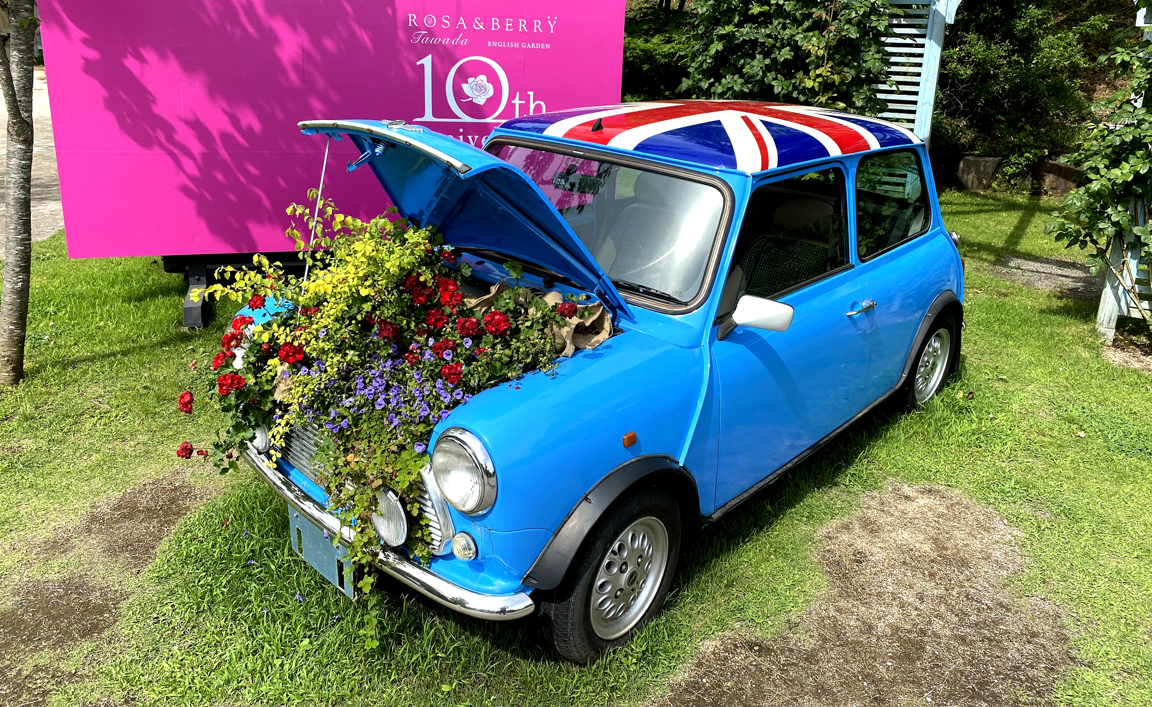
Aadditive color mixing in spatial color mixing
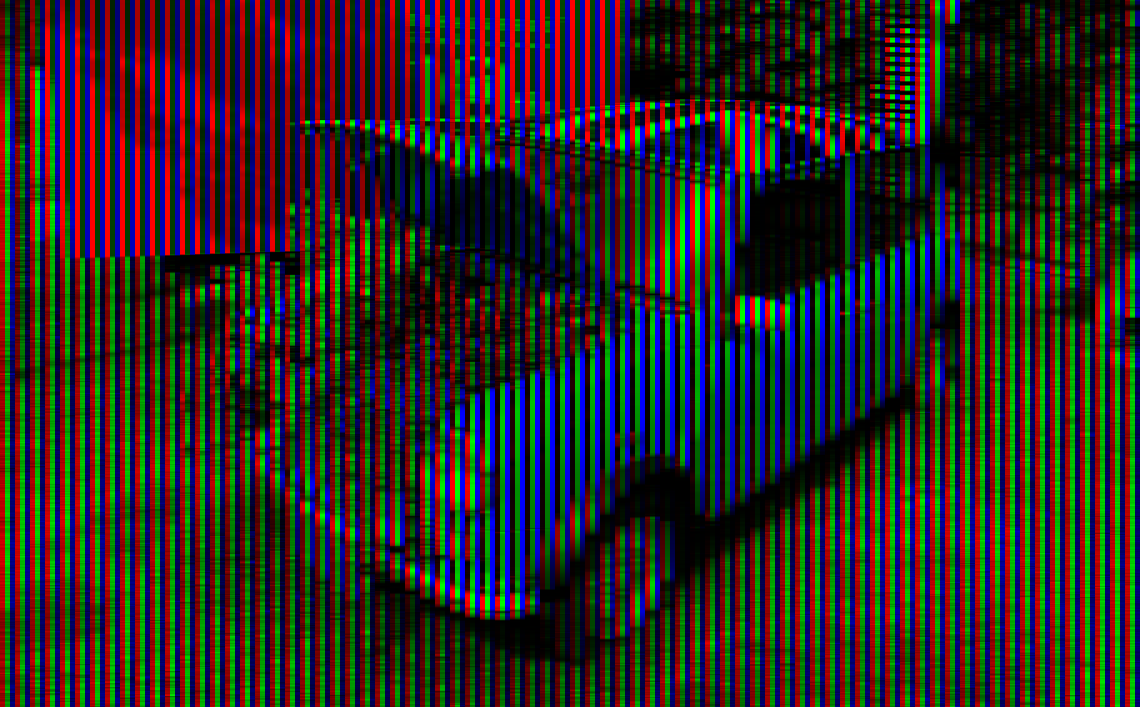
"Subtractive" color mixing in spatial color mixing
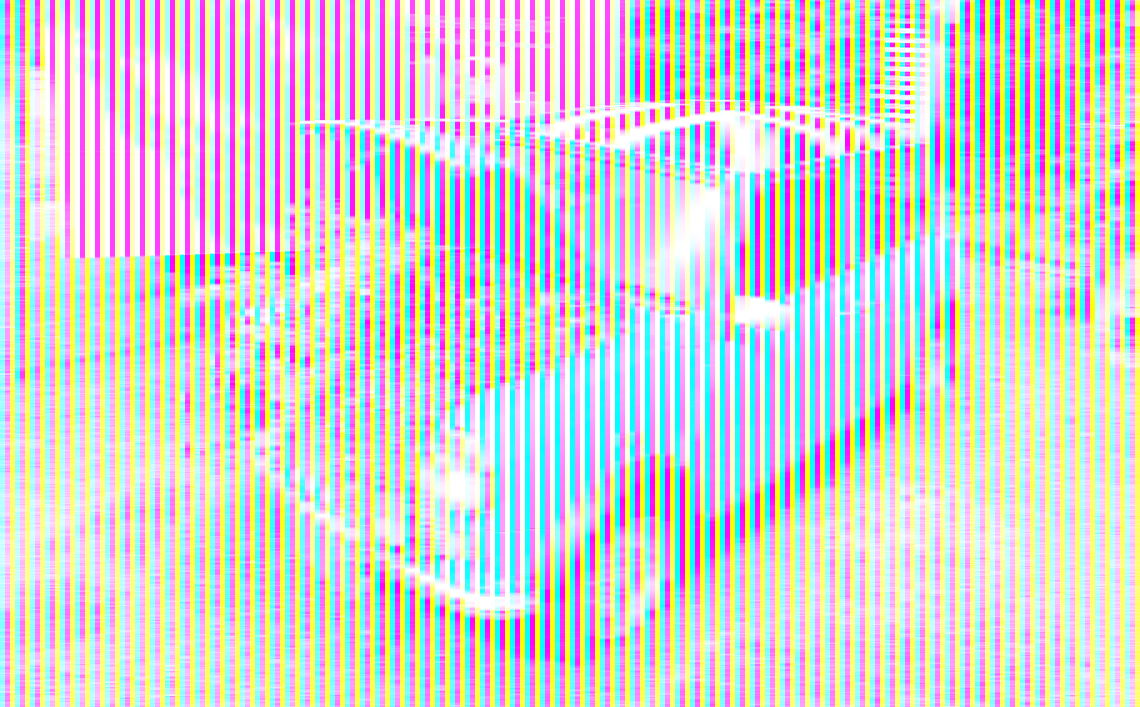
![]()
In additive color mixing, the primary colors are red, green, and blue.
In "subtractive" color mixing, the "primary colors"
are cyan, magenta, and yellow. I understand your concern that there can
be no subtractive color mixing in spatial color mixing and that only additive
color mixing can work. Therefore, here, I have enclosed the word "subtractive"
in quotation marks.
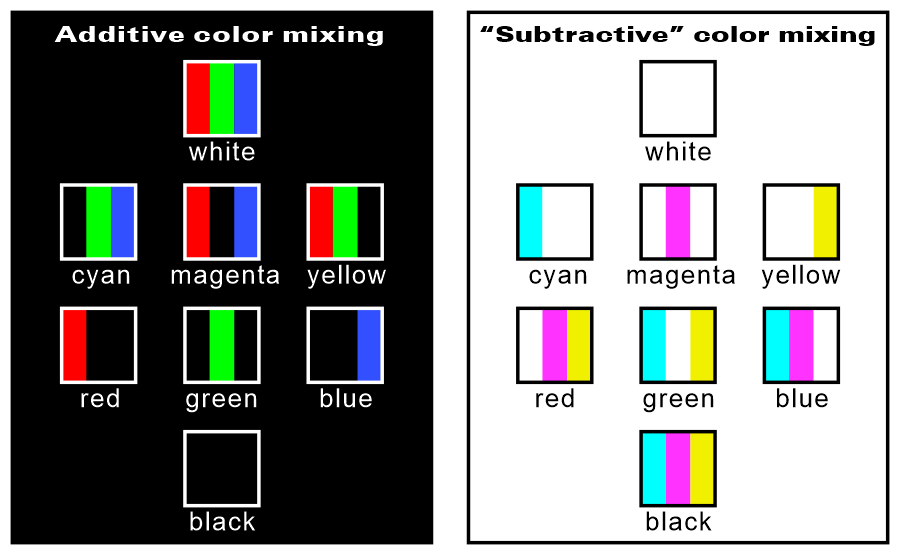
How each color is displayed
Enlarged part of the additive color mixing image
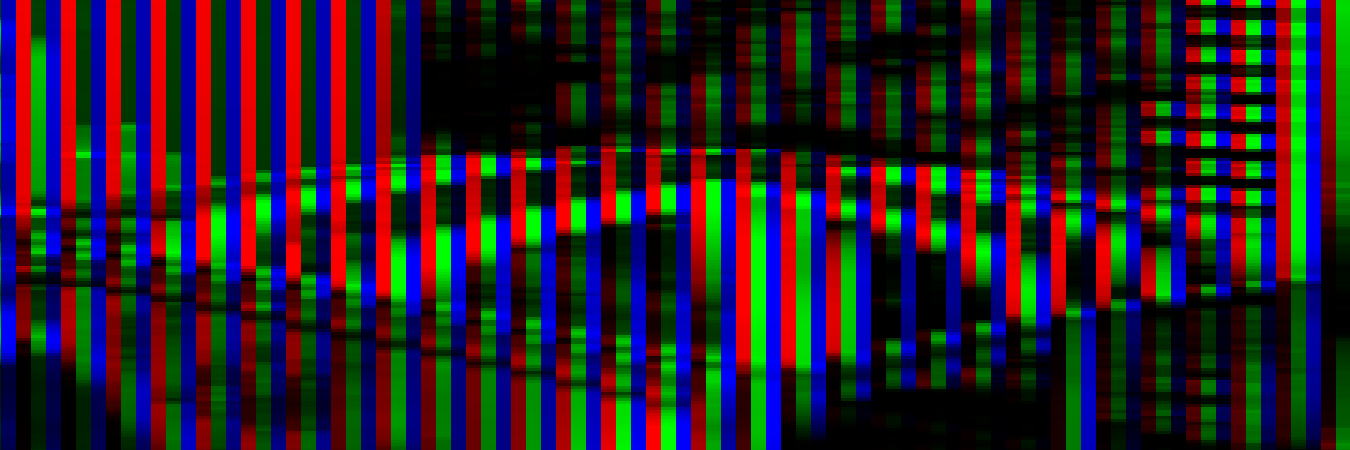
Enlarged part of the "subjective" color mixing image
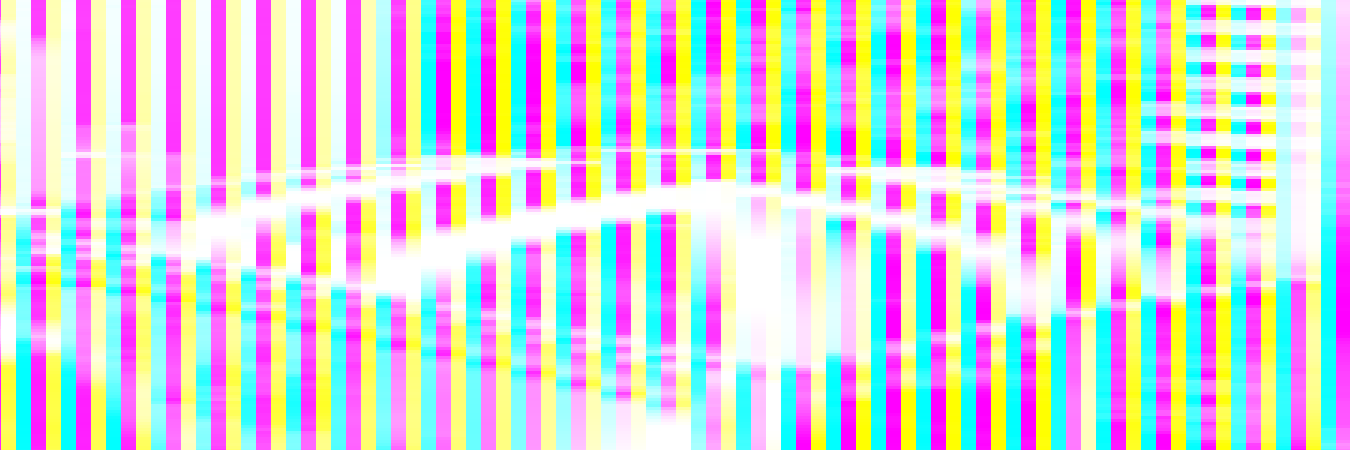
(3) A new type of spatial color mixing
Spatial color mixing between additive color mixing and "subtractive" one
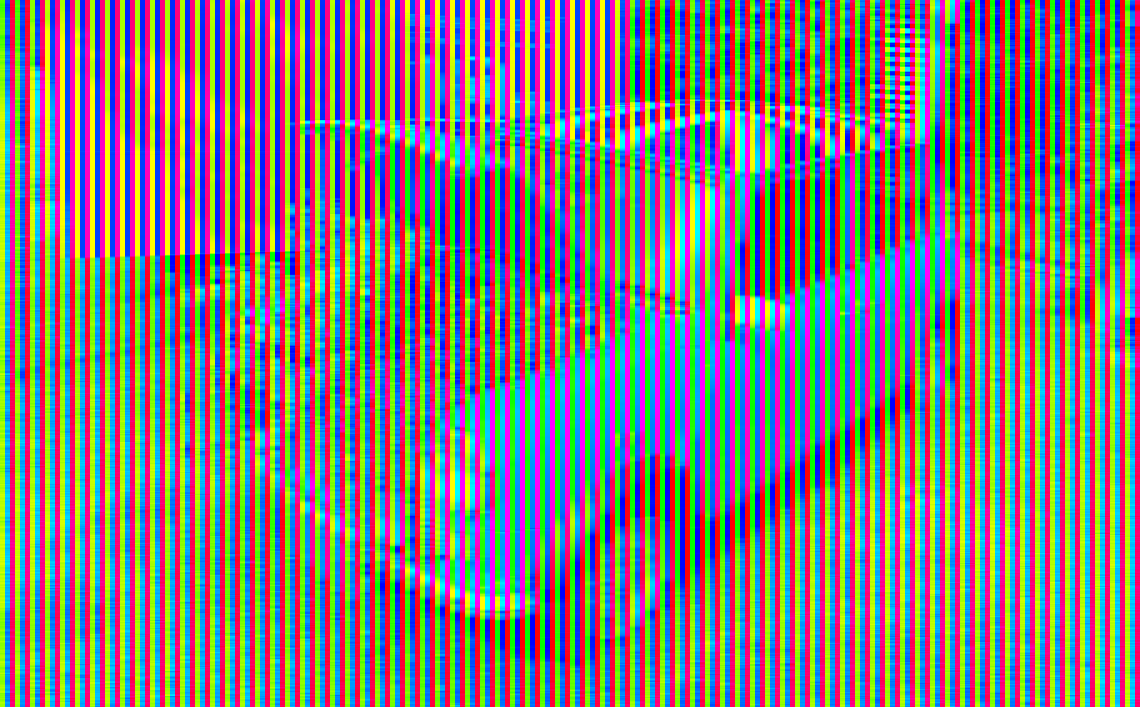
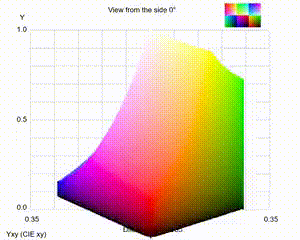 Here I tentatively call this type "intermediate" color mixing.
Here I tentatively call this type "intermediate" color mixing.
Enlarged part of the "intermediate" color mixing image
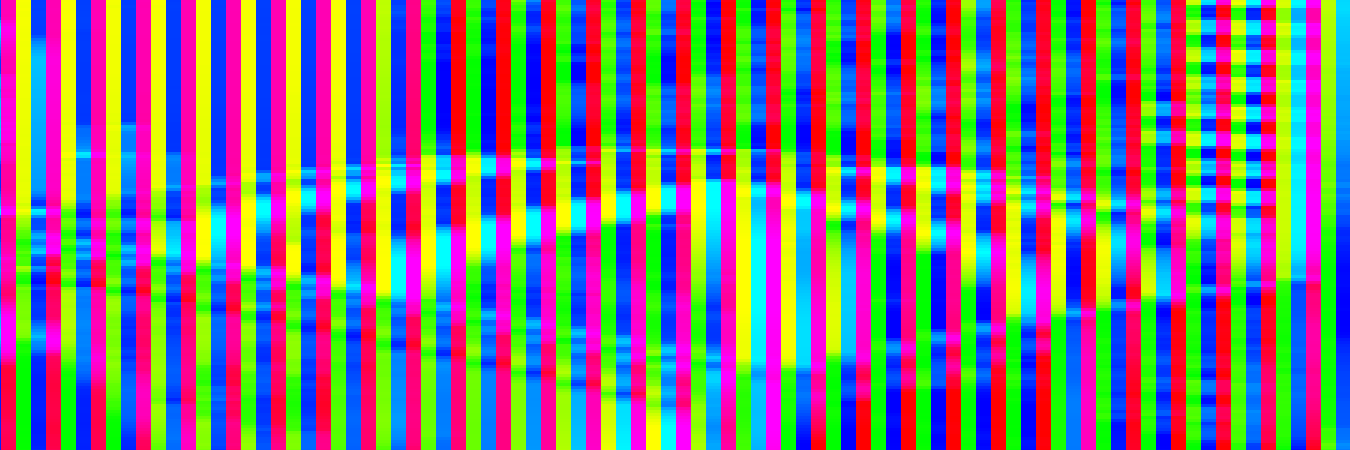
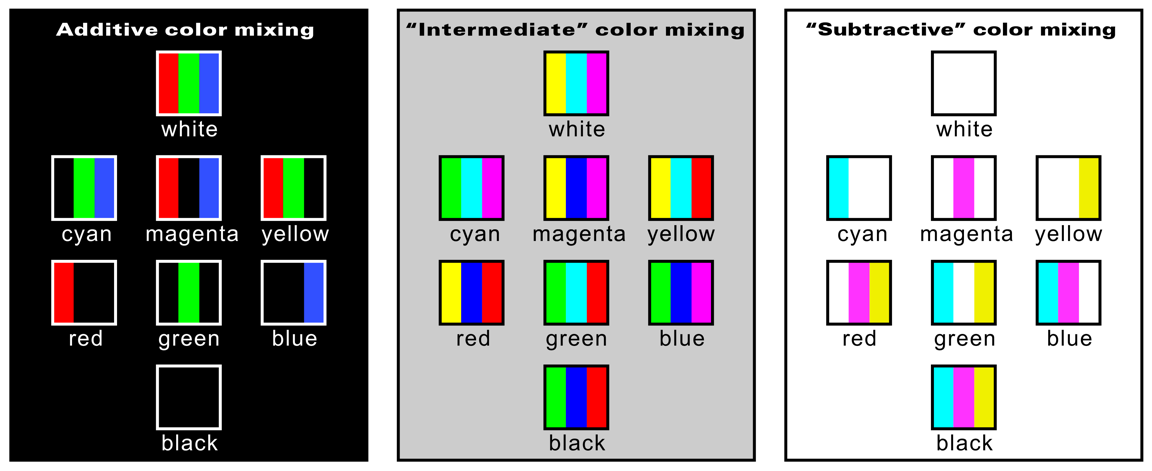

Reference
Kitaoka, A. (2021). Illusion based upon a new type of spatial color mixing
and application to VR. Keynote lecture in the 26th Annual Conference of the Virtual Reality Society of Japan, September 12, 2021, online. Presentation (html)
(4) Illusion obtained by combining three types of spatial color mixing
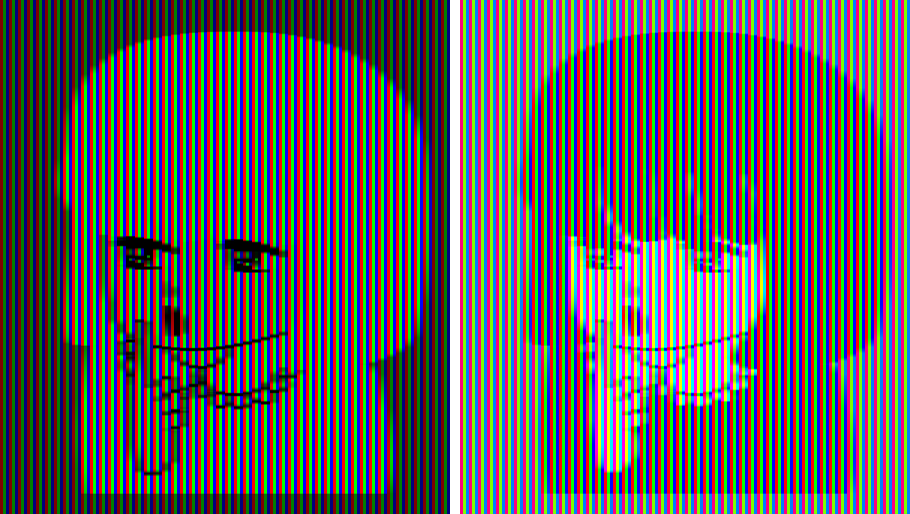
Additive color mixing vs. "intermediate" color mixing
The hair and clothes in the left image appear white while those in the right image appear black. However, they are composed of the same red, green, and blue stripes.
Copyright Akiyoshi Kitaoka 2021 (May 10)
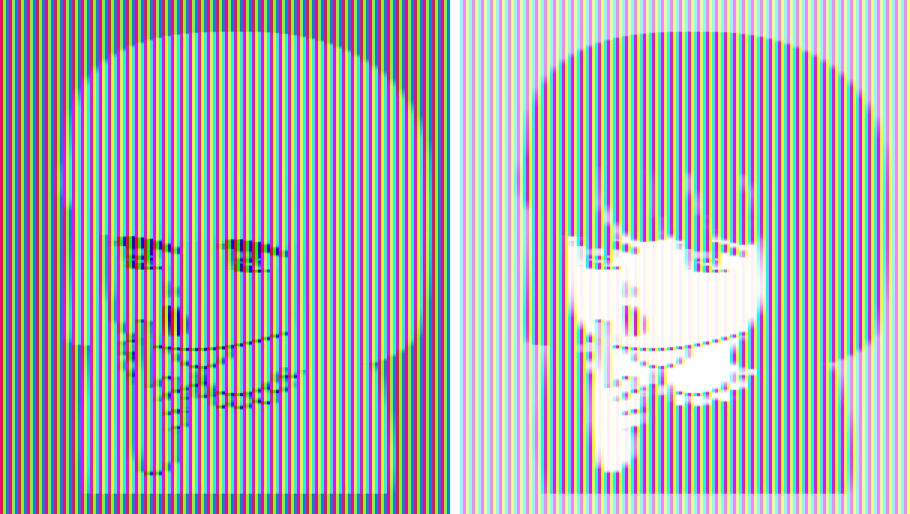
"Intermediate" color mixing vs. "subtractive" color mixing
The hair and clothes in the left image appear white while those in the right image appear black. However, they are composed of the same cyan, magenta, and yellow stripes.
Copyright Akiyoshi Kitaoka 2021 (May 10)
(5) Another version of the "intermediate" color mixing
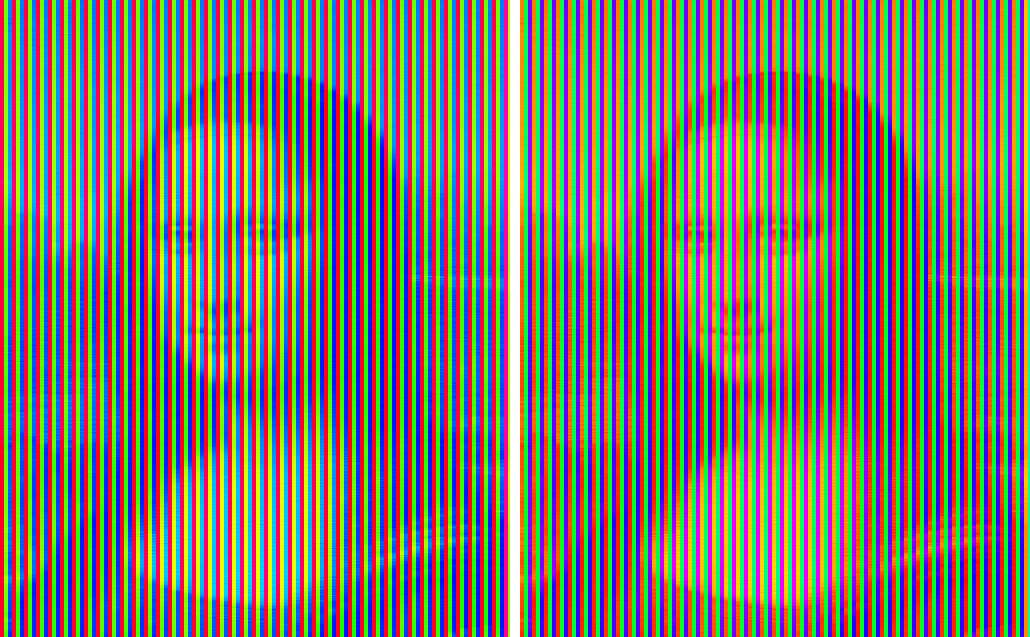
What is the difference between the two images?
Enlarged image
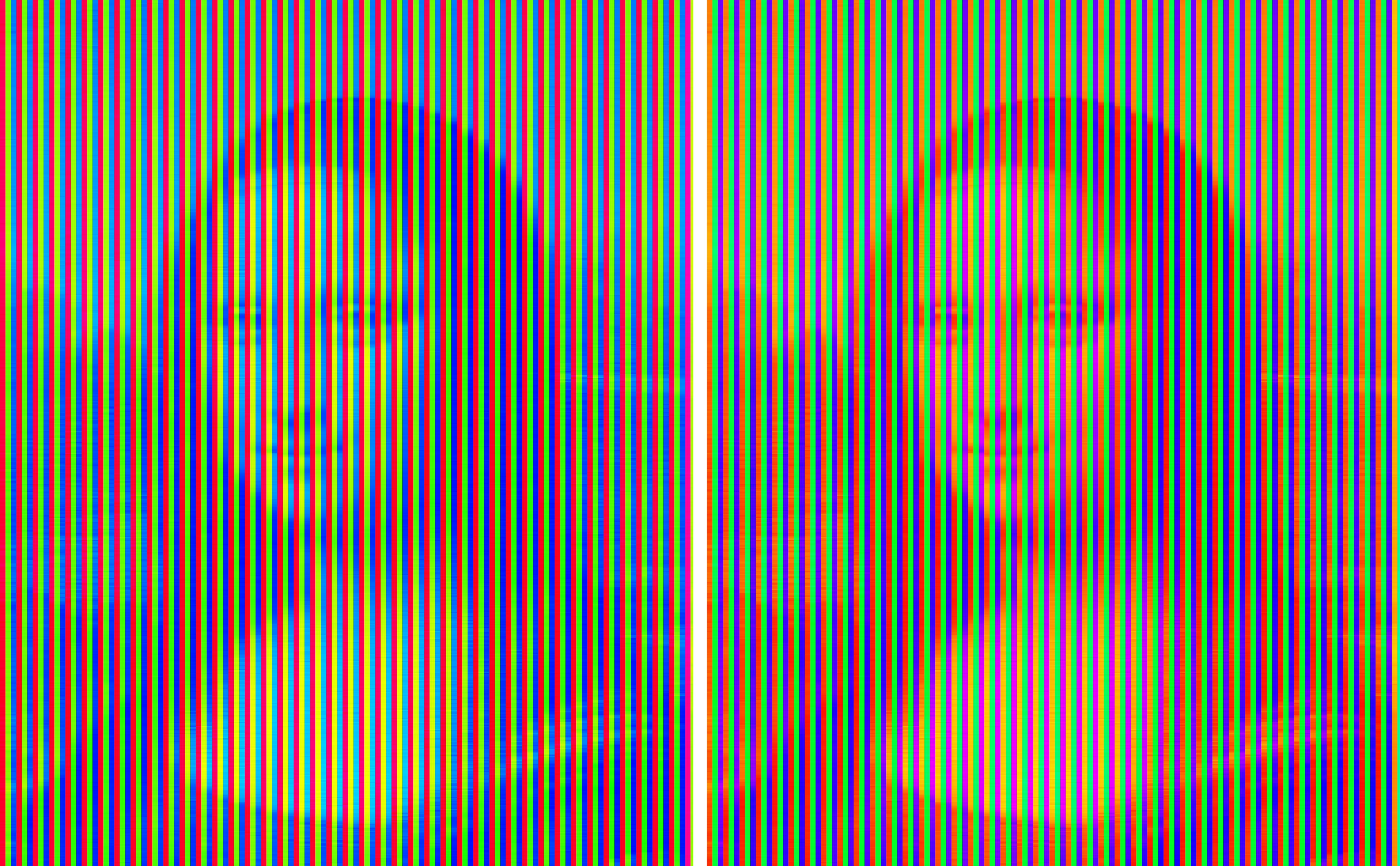
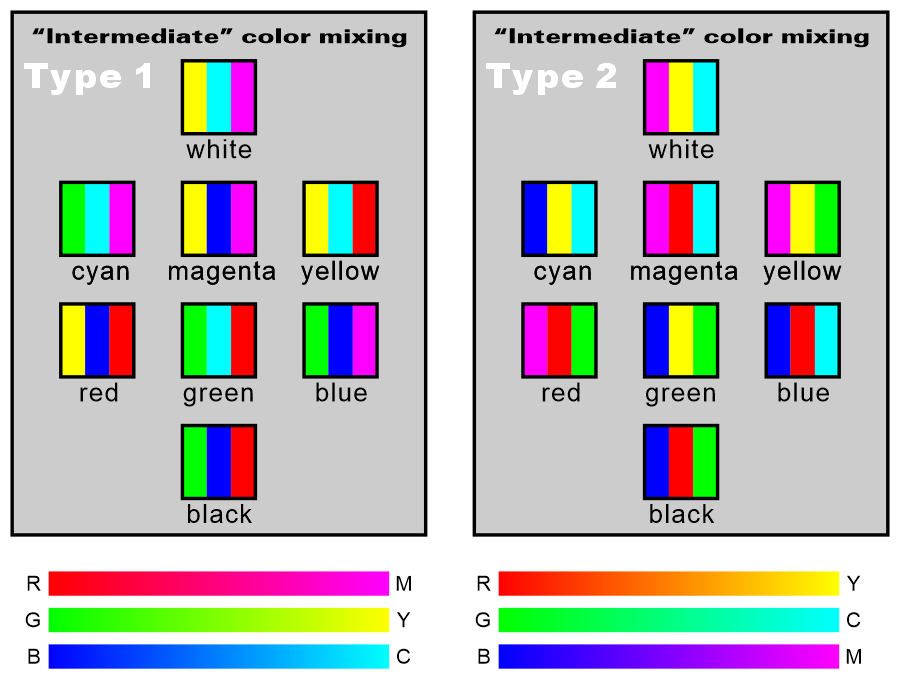

A high-resolution image can be downloaded by clicking this image.
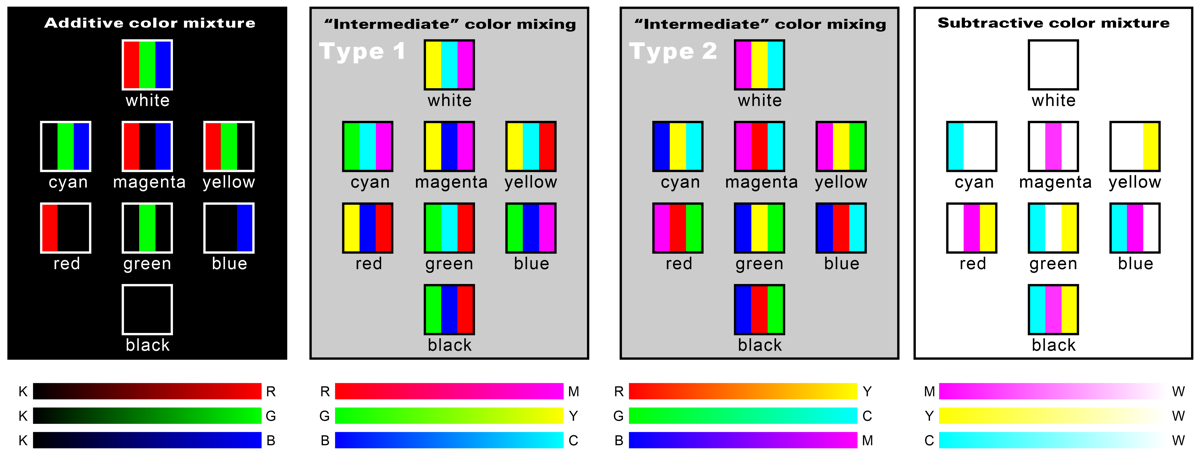
Four types of spatial color mixing
(7) Spatial color mixing with two subpixels
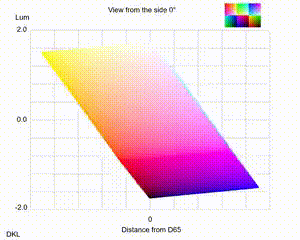 By mixing two of the three primary colors, spatial color mixing can be
reduced to two sub-pixels while maintaining full color.
By mixing two of the three primary colors, spatial color mixing can be
reduced to two sub-pixels while maintaining full color.
(7-1) Subpixels R and G are integrated.
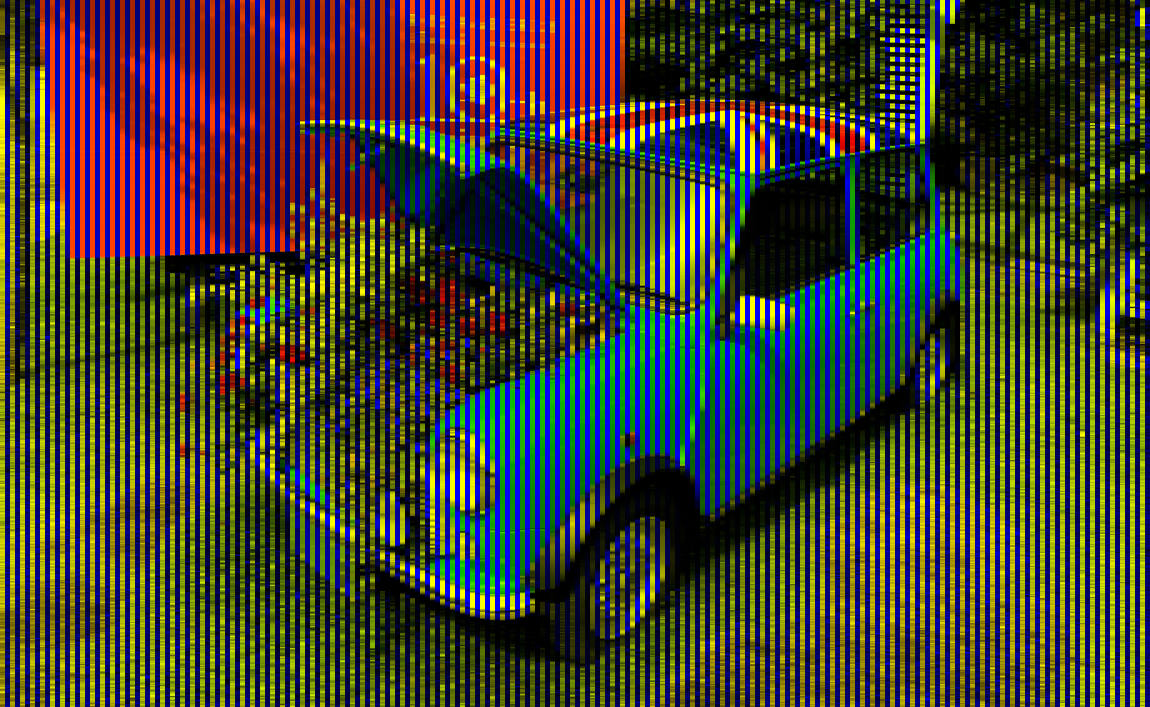
Enlarged part
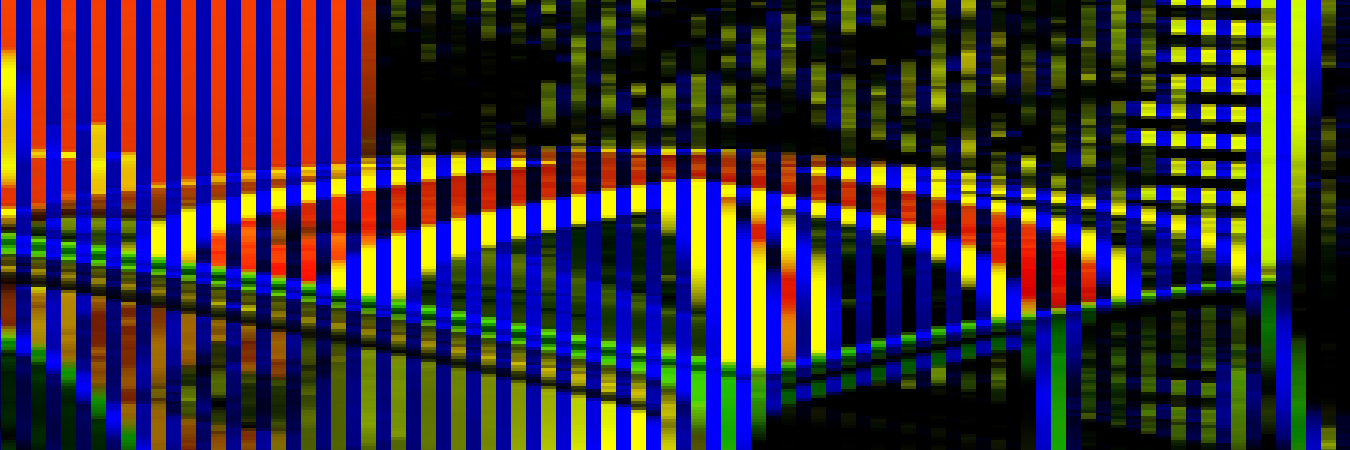
(7-2) Subpixels G and B are integrated.
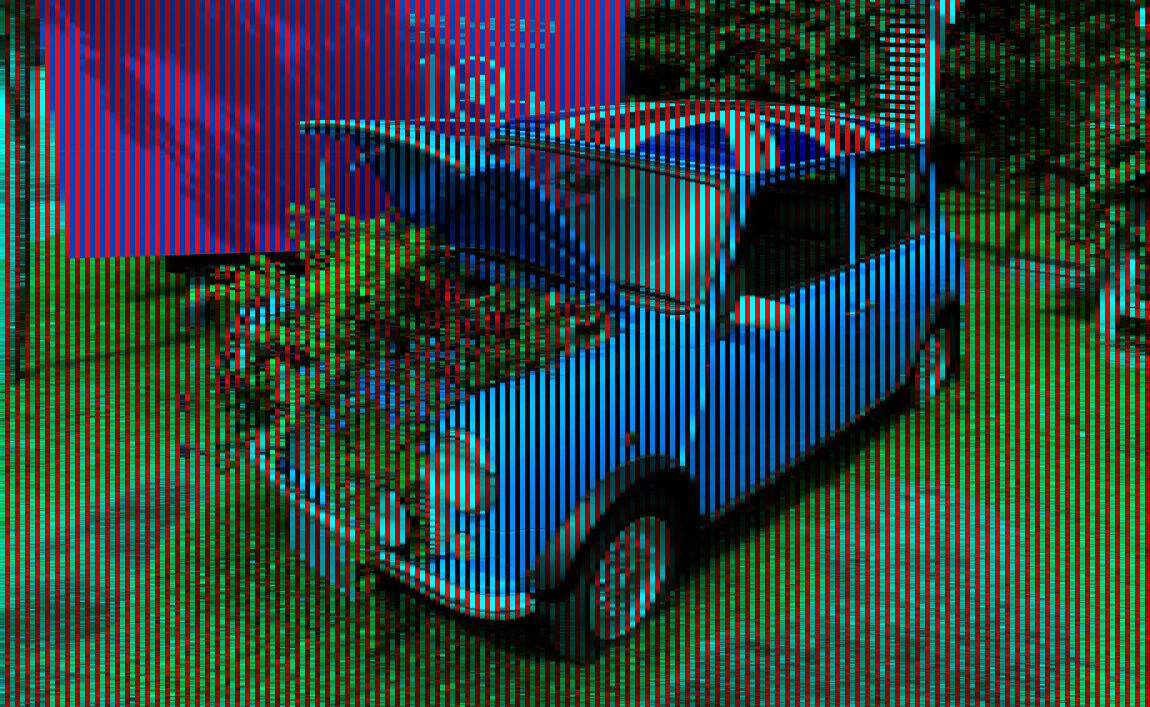
Enlarged part
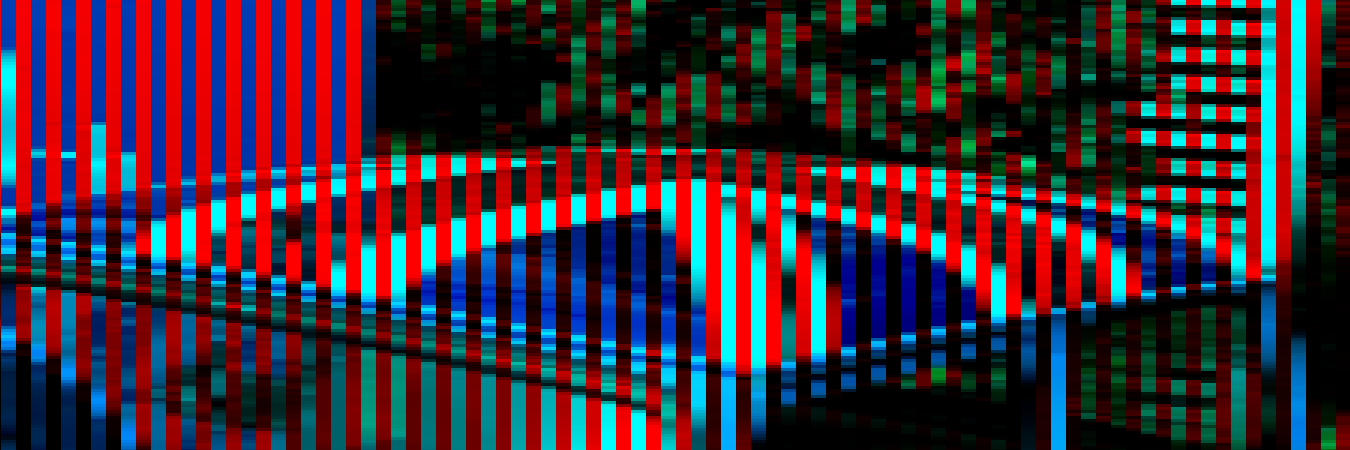
(7-3) Subpixels B and R are integrated.
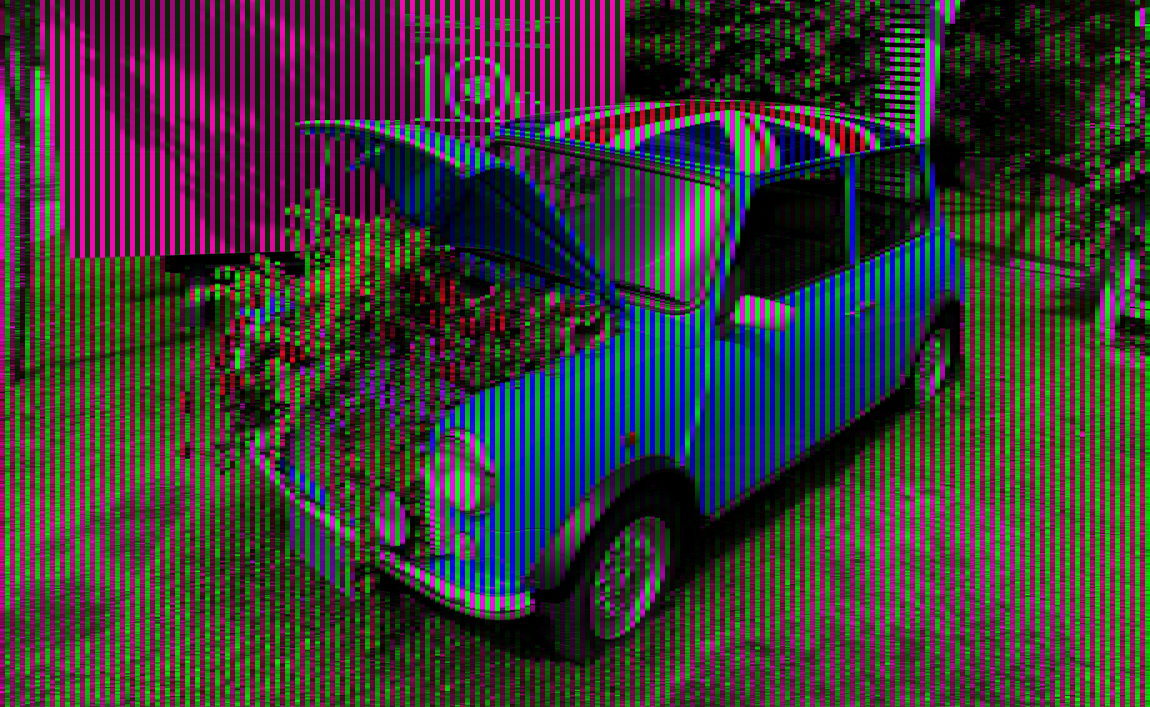
Enlarged part
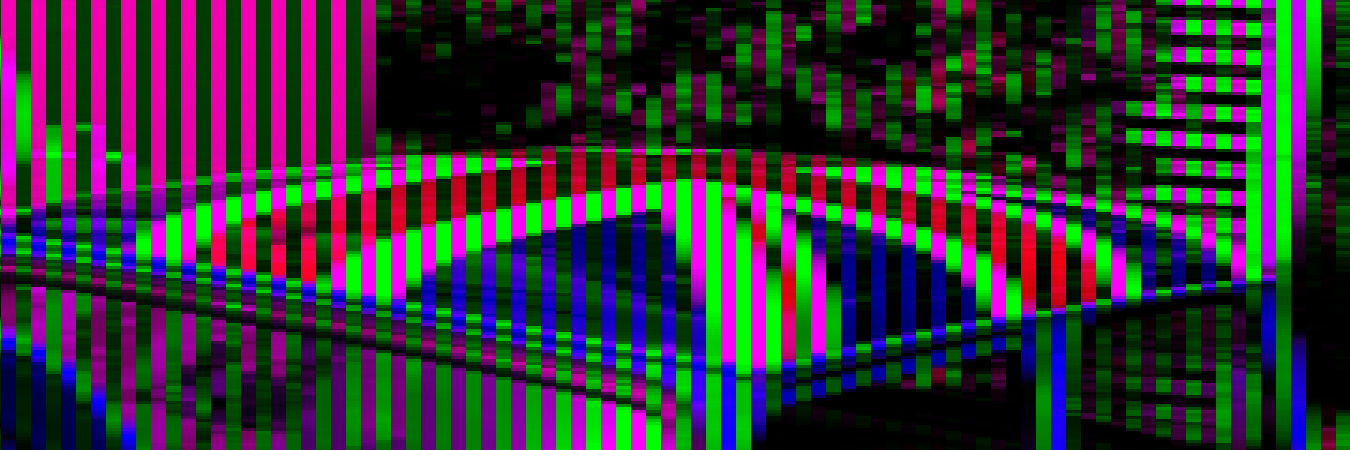
(8) Brighter spatial color mixing with two subpixels
There is room to add colors to the two subpixels.
(8-1) Subpixels R and G are integrated and 100% of blue is added to the
integrated subpixel. On the other hand, 100% of yellow is added to the
B subpixel.
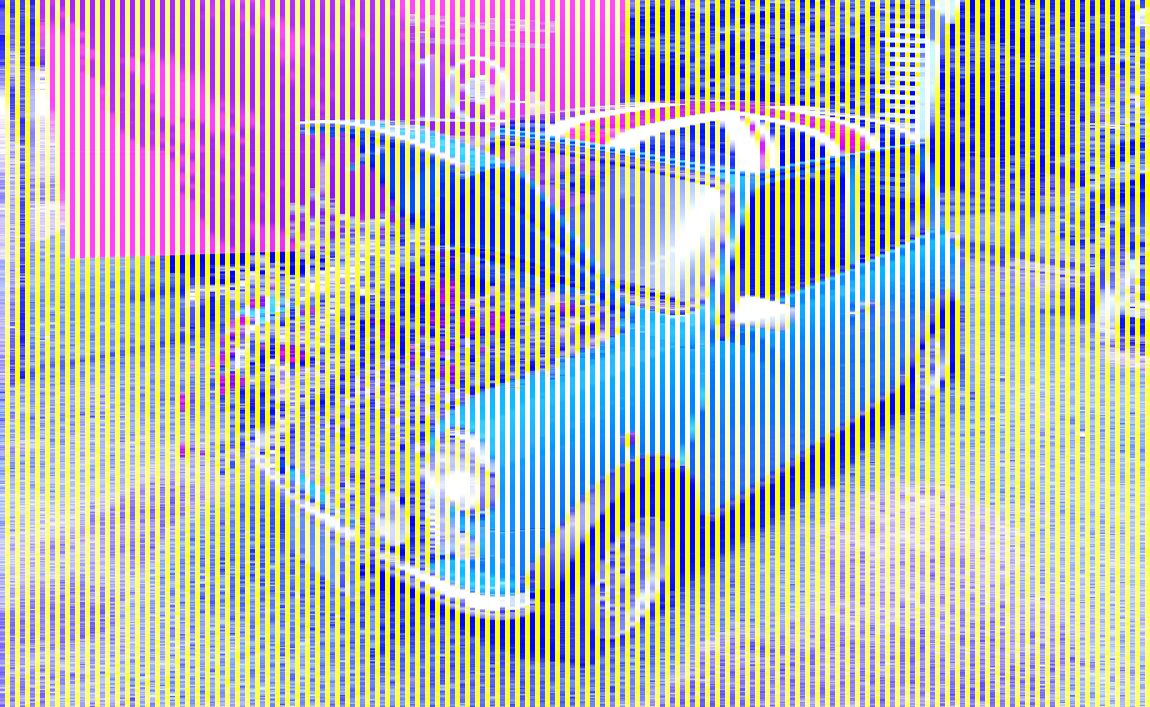
Enlarged part
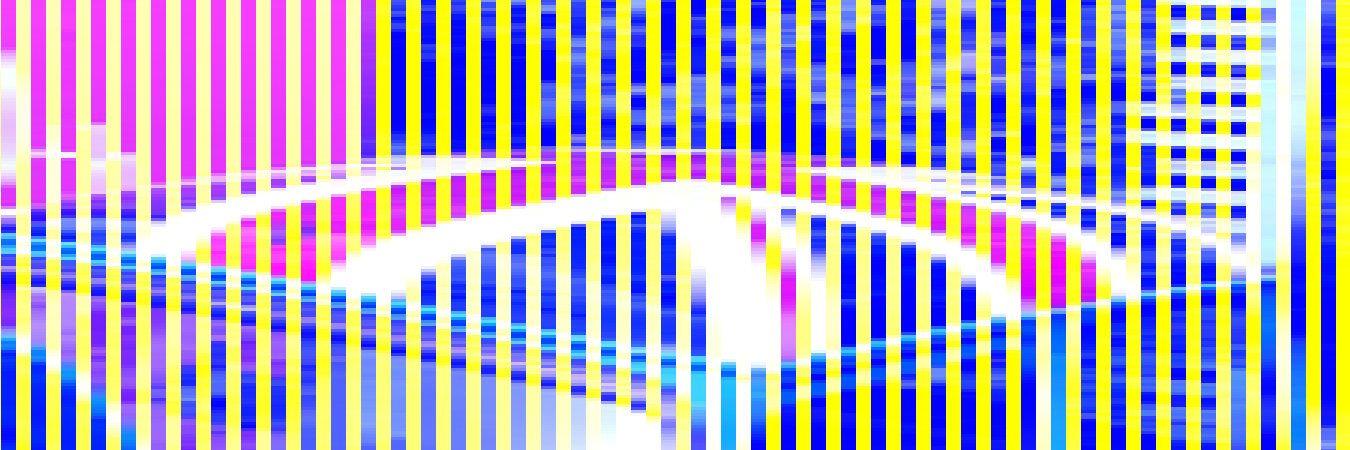
(8-2) Subpixels G and B are integrated and 100% of red is added to the
integrated subpixel. On the other hand, 100% of cyan is added to the R
subpixel.
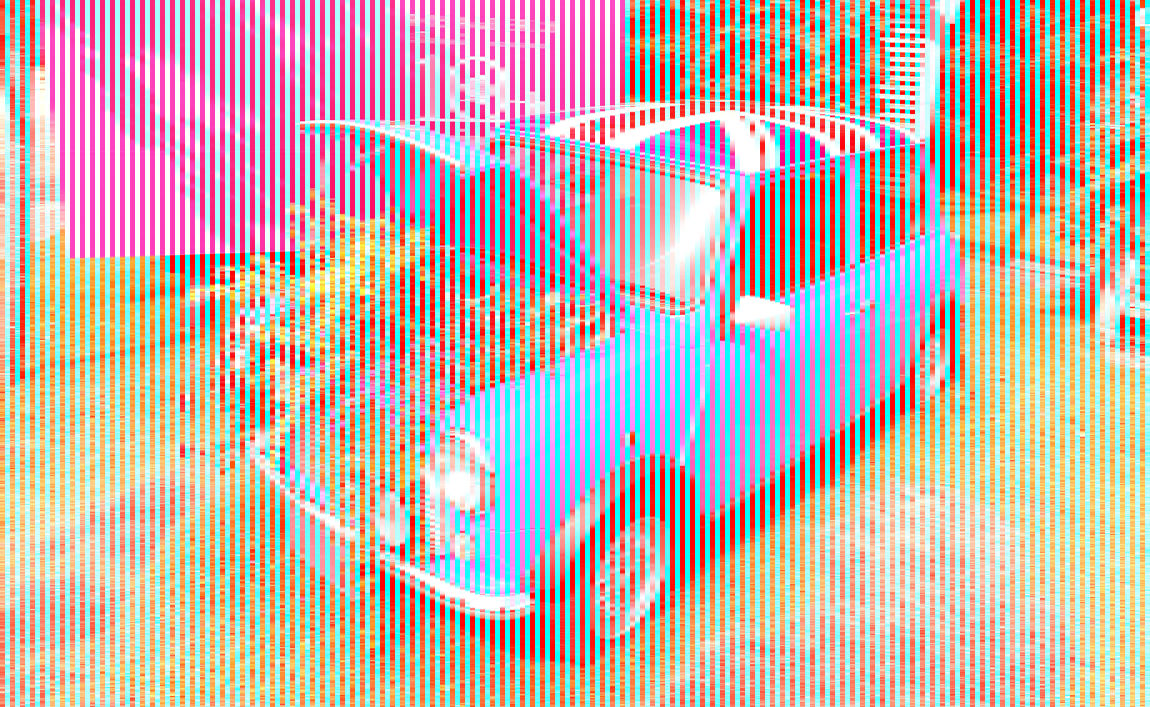
Enlarged part
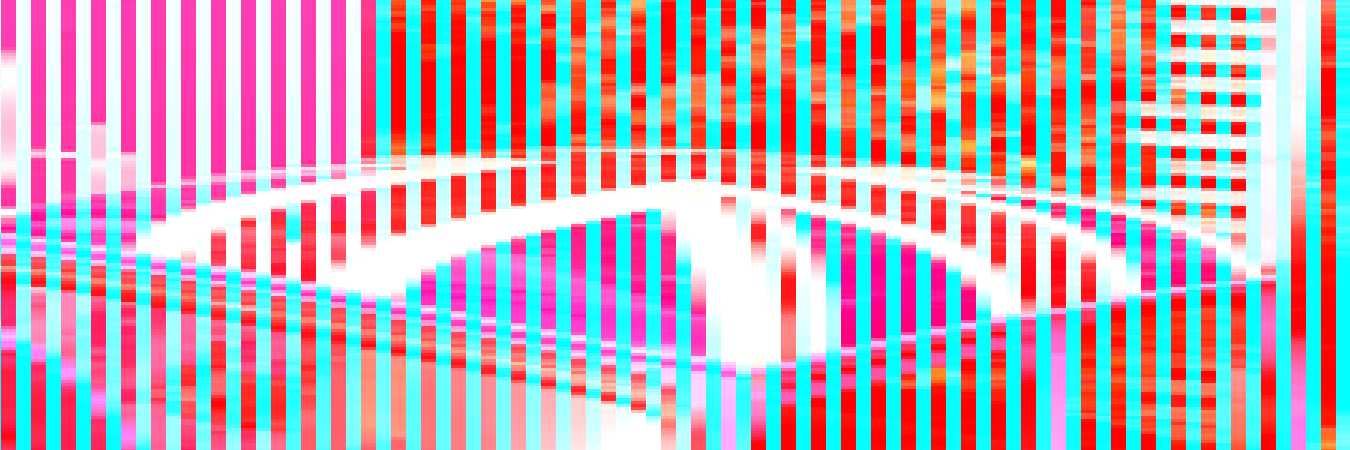
(8-3) Subpixels B and R are integrated and 100% of green is added to the
integrated subpixel. On the other hand, 100% of magenta is added to the
G subpixel.
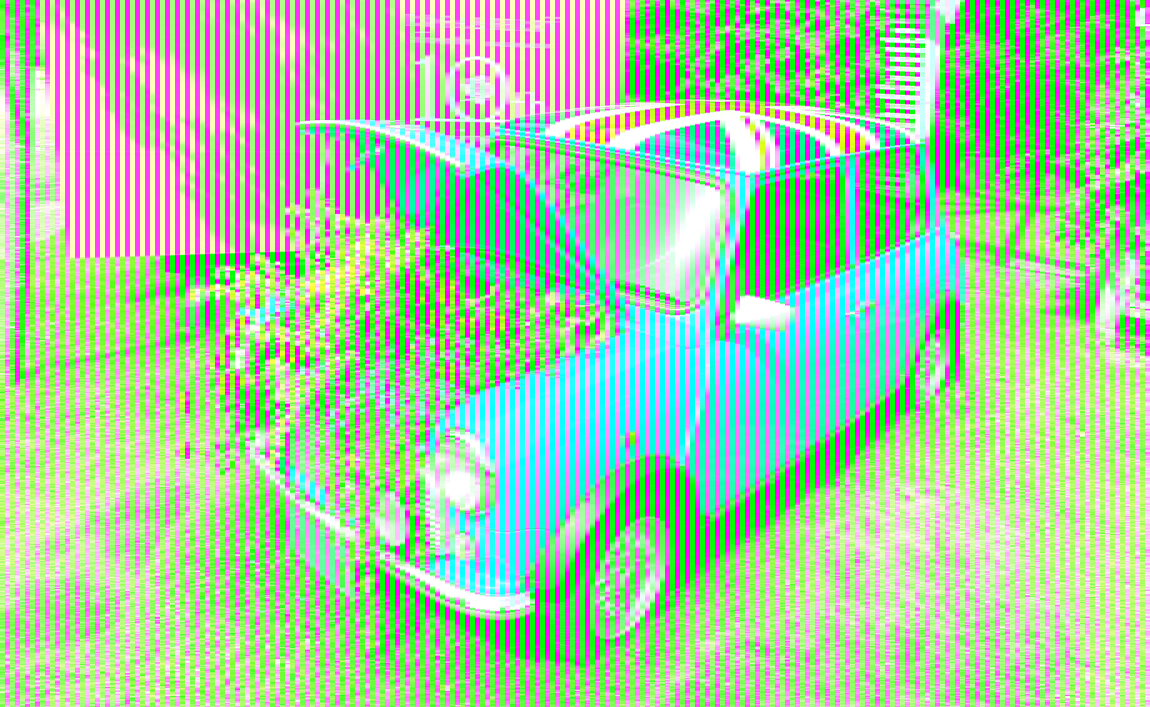
Enlarged part
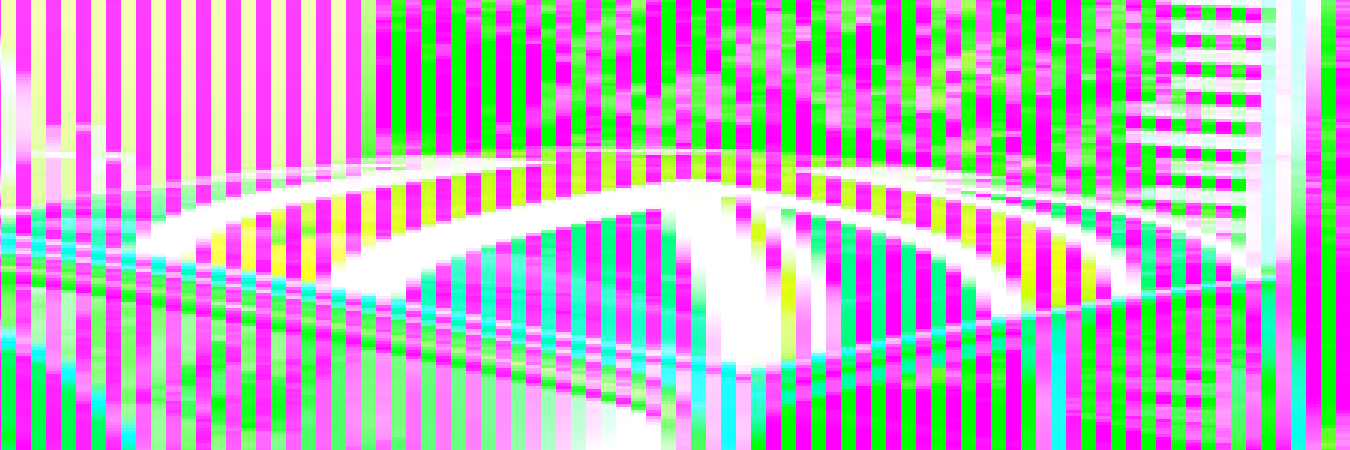
(9) Illusion obtained by combining three by two types of spatial color mixing with two subpixels
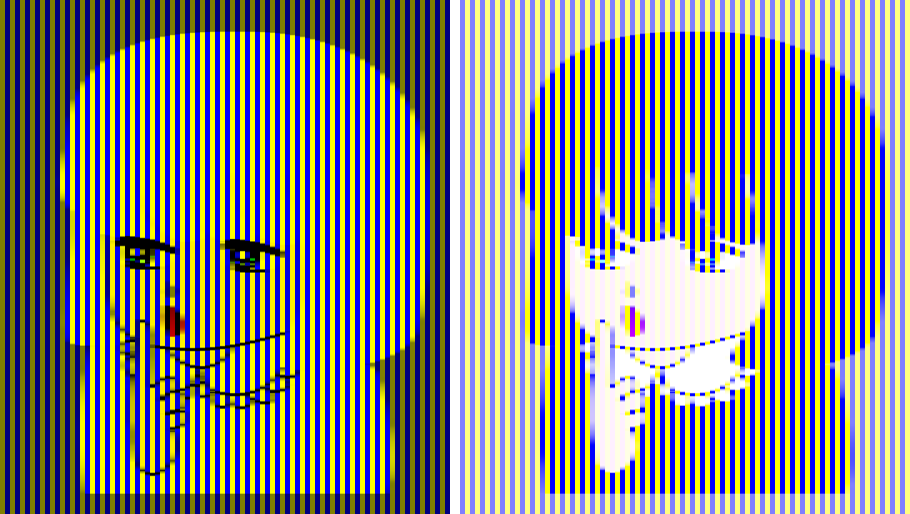
7-1 vs. 8-1
The hair and clothes in the left image appear white while those in the right image appear black. However, they are composed of the same blue and yellow stripes.
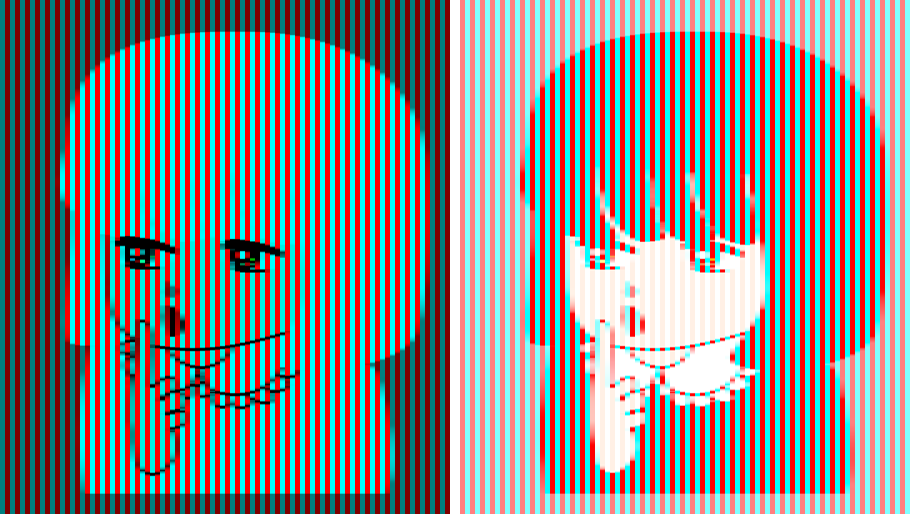
7-2 vs. 8-2
The hair and clothes in the left image appear white while those in the right image appear black. However, they are composed of the same red and cyan stripes.
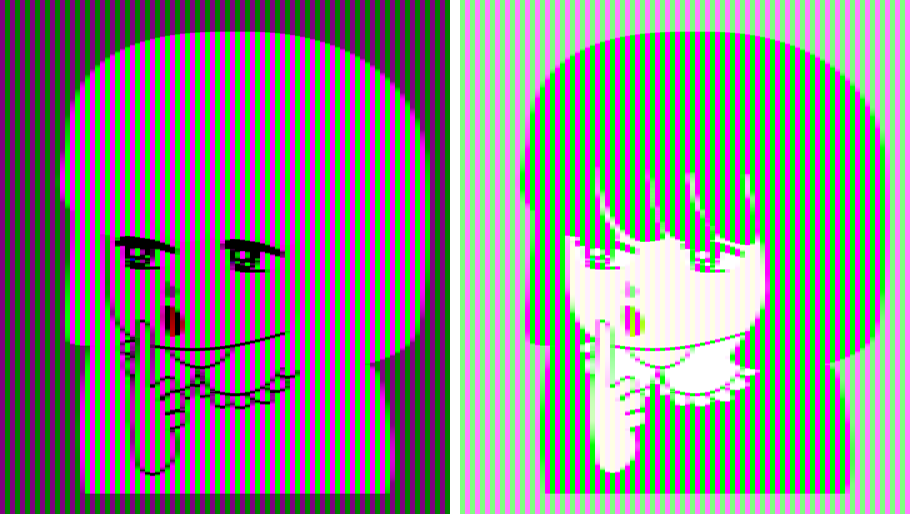
7-3 vs. 8-3
The hair and clothes in the left image appear white while those in the right image appear black. However, they are composed of the same green and magenta stripes.
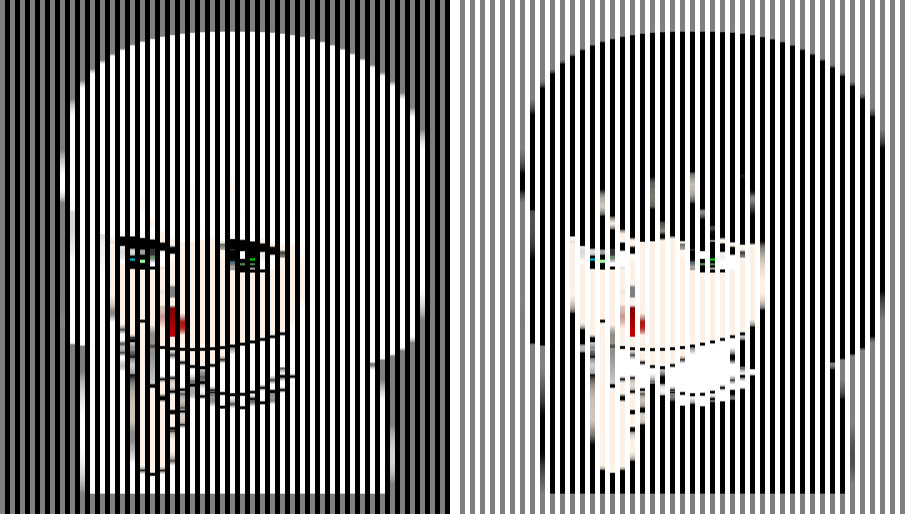
(in another way; explanation omitted)
The hair and clothes in the left image appear white while those in the right image appear black. However, they are composed of the same black and white stripes.
Copyright Akiyoshi Kitaoka 2023 (February 22)
(10) Illusory red composed of blue, yellow, and black stripes
Spatial color mixing with three subpixels
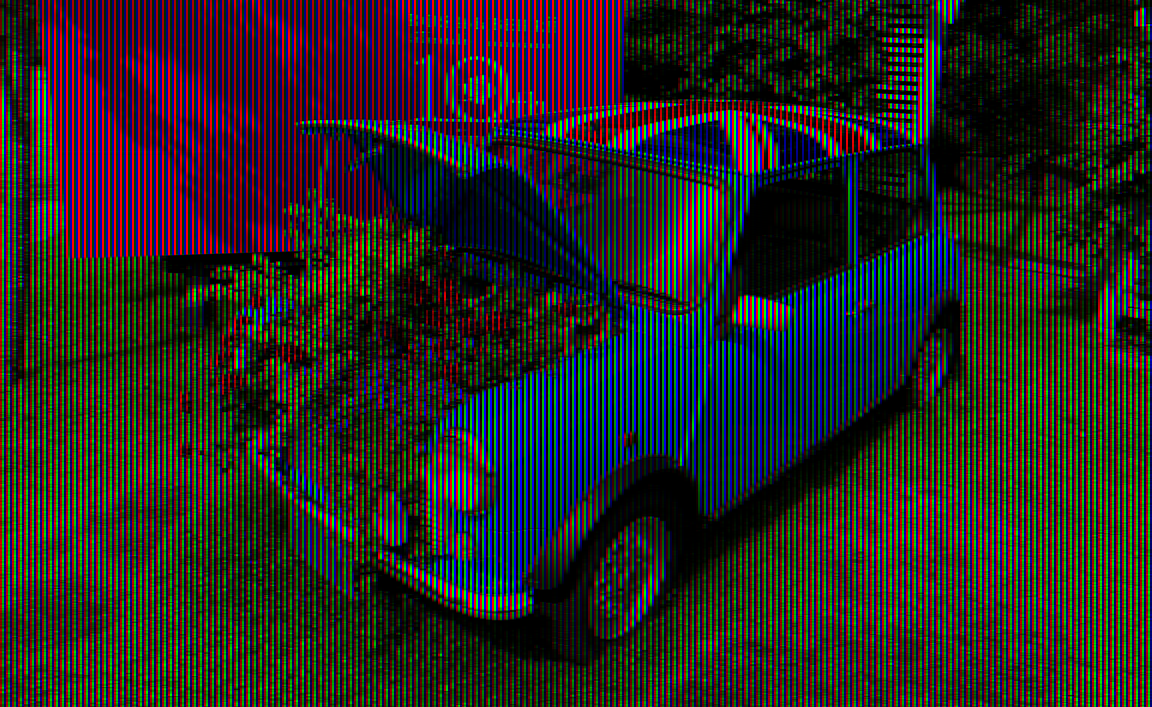

100% of green is added to the R subpixel and 100% of blue is added to the
G subpixel. Then, there are no red pixels, but red is perceived (color
illusion or color constancy).
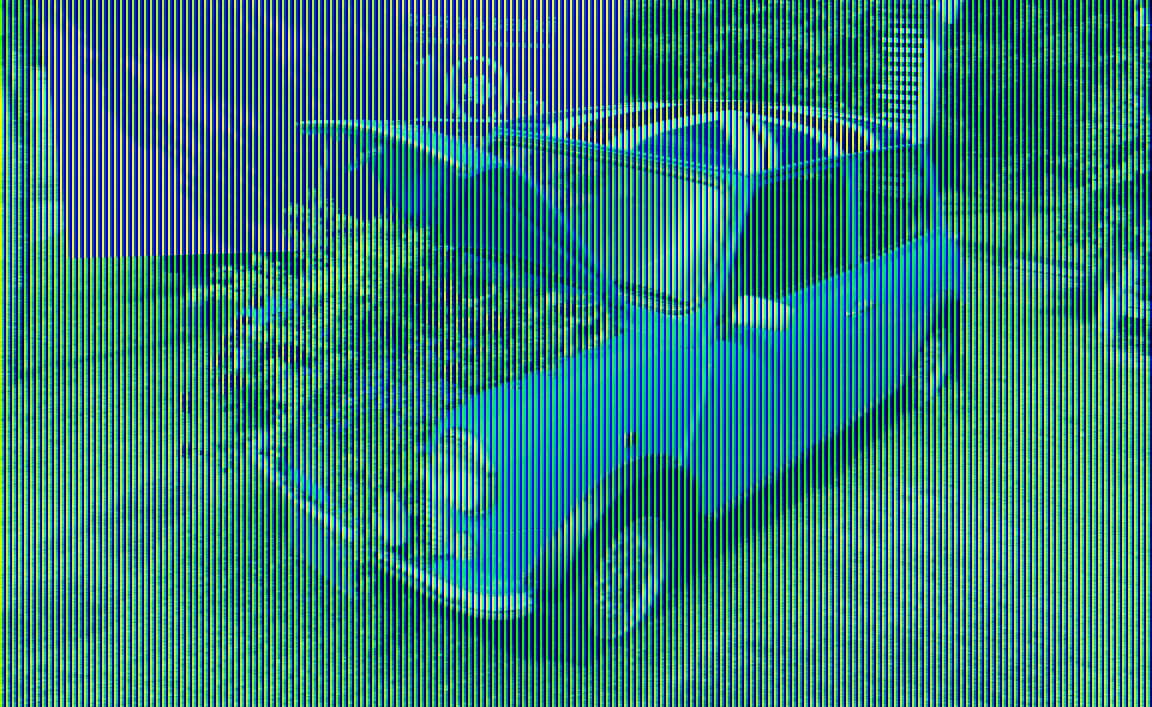
Enlarged part (Red is displayed with blue, yellow, and black stripes)
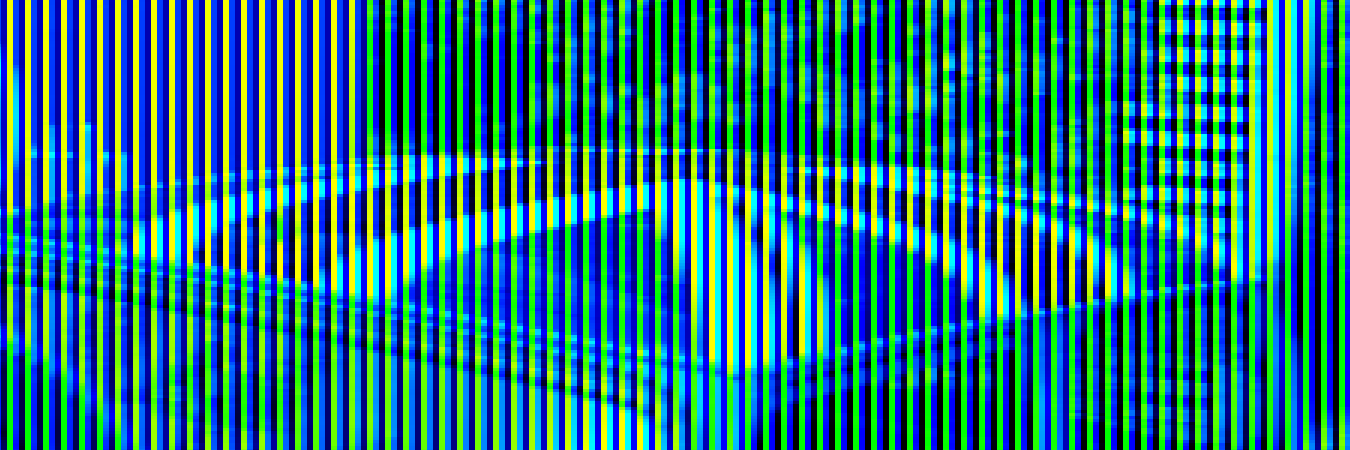
Another examle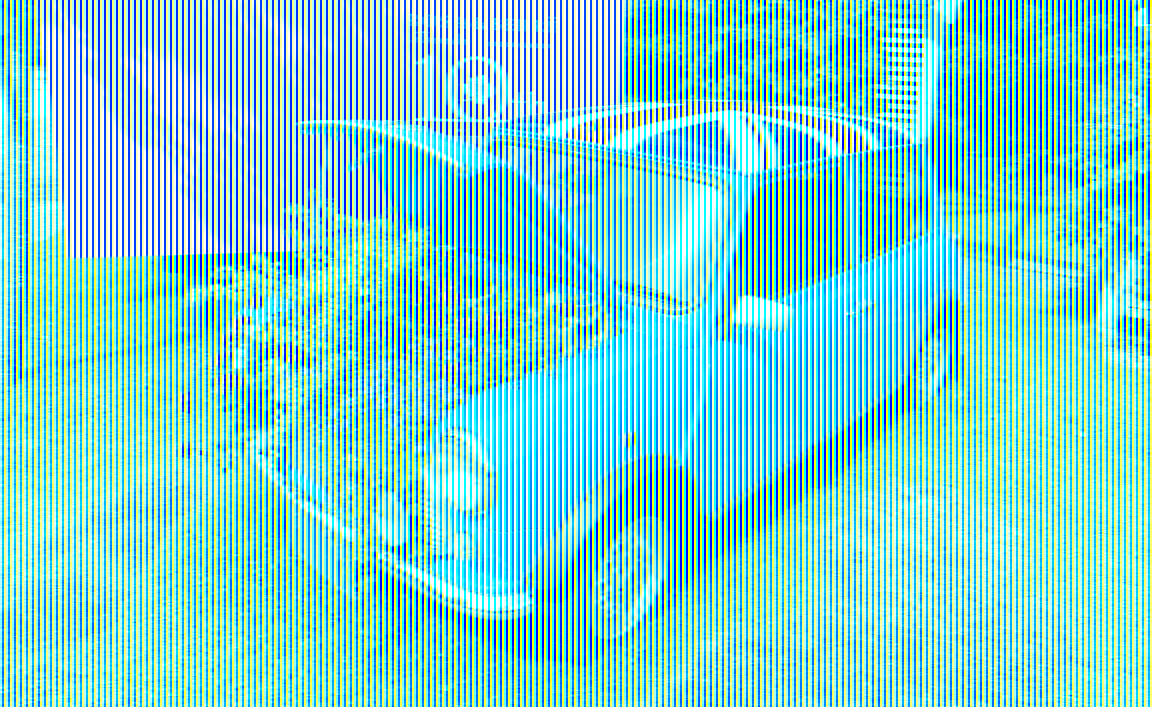
Enlarged part (Red is displayed with blue, yellow, and white stripes)
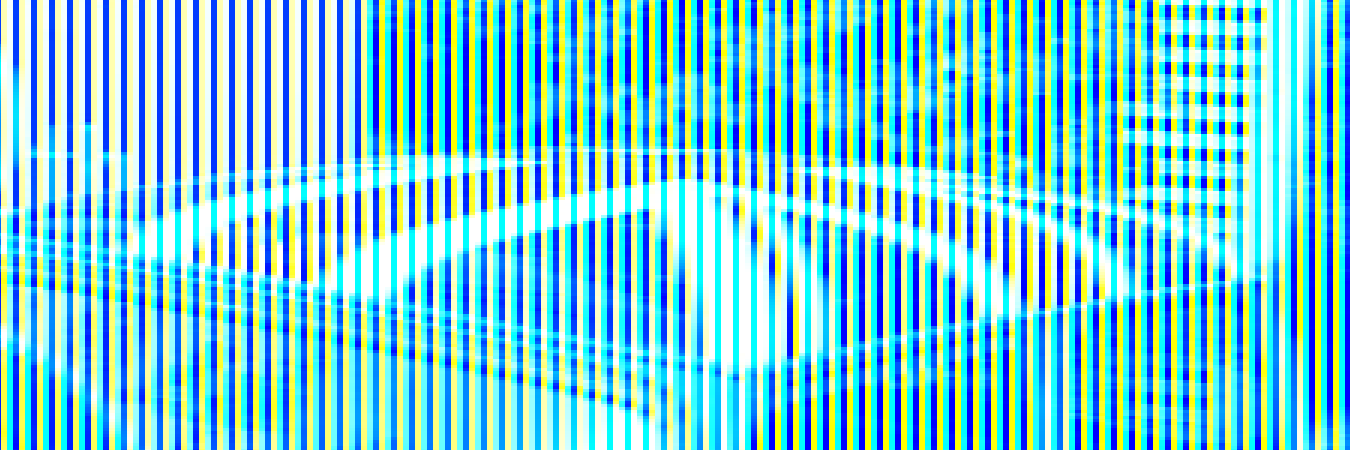
Let's make some
Spatial color mixing with three color lanes <October 13, 14, 2022>
If you need color image, samples are available from sample_images.html.
(11) Illusory red composed of black and white
Spatial color mixing with two subpixels (R subpixel and G&B subpixel)
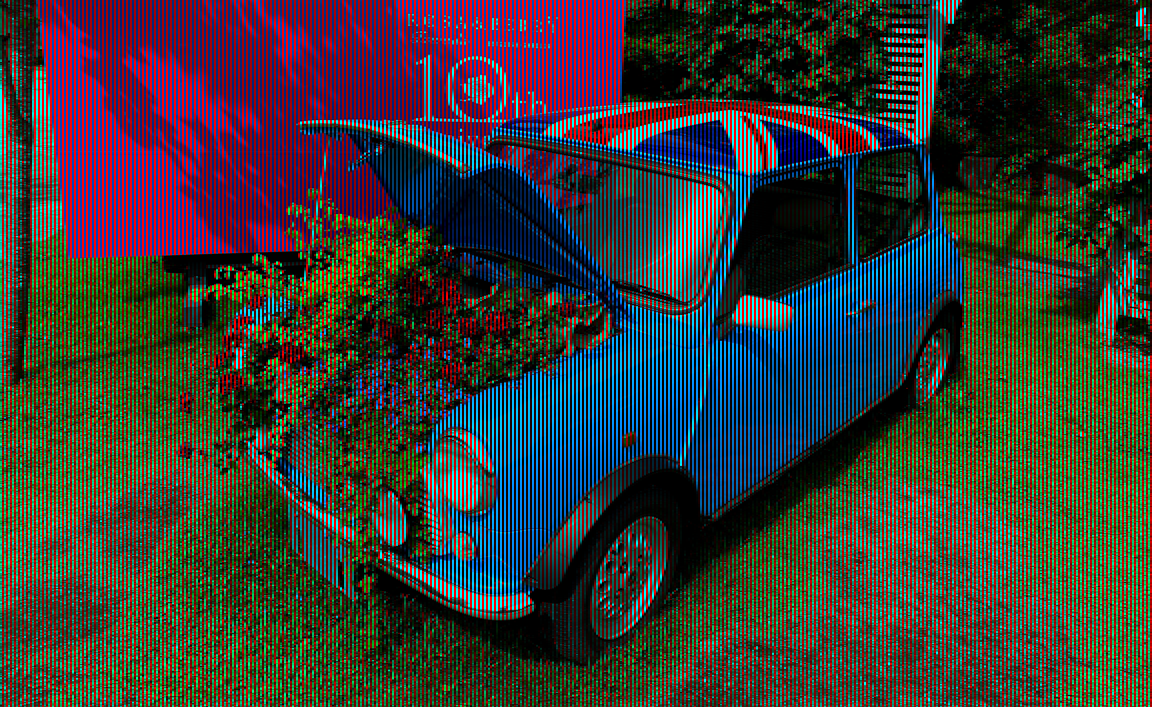

100% of cyan is added to the R subpixel. Then, there are no red pixels,
but red is perceived (color illusion or color constancy).
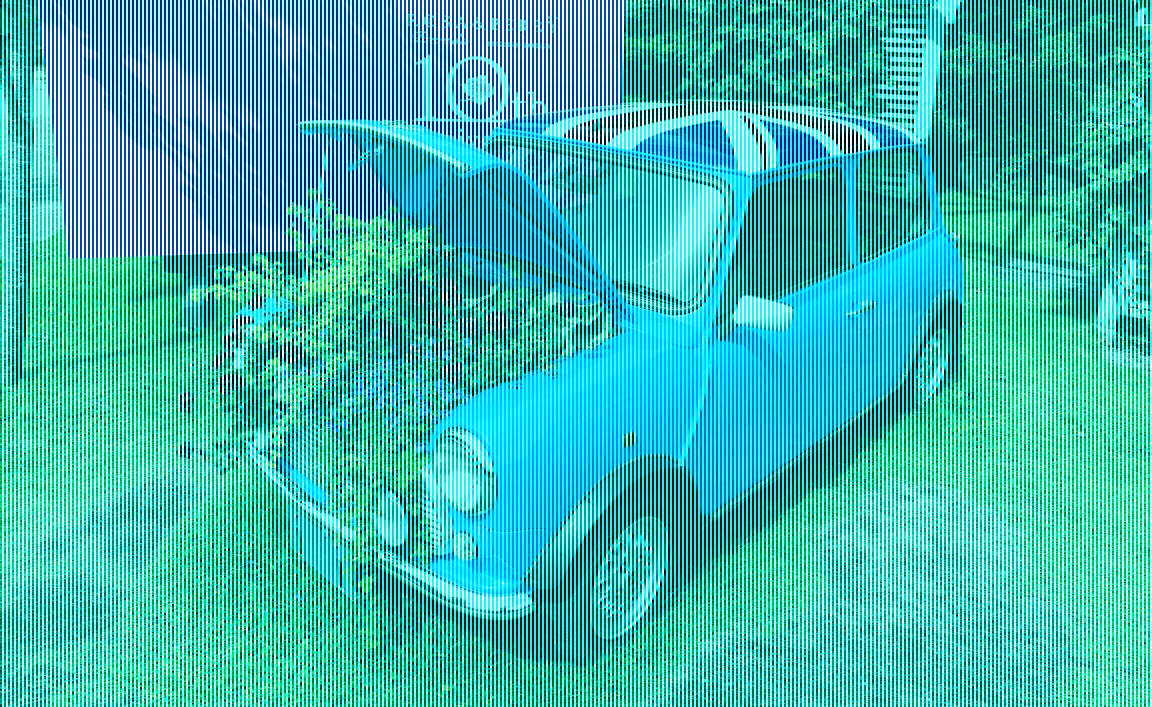
Enlarged part (Red is displayed with black and white stripes)
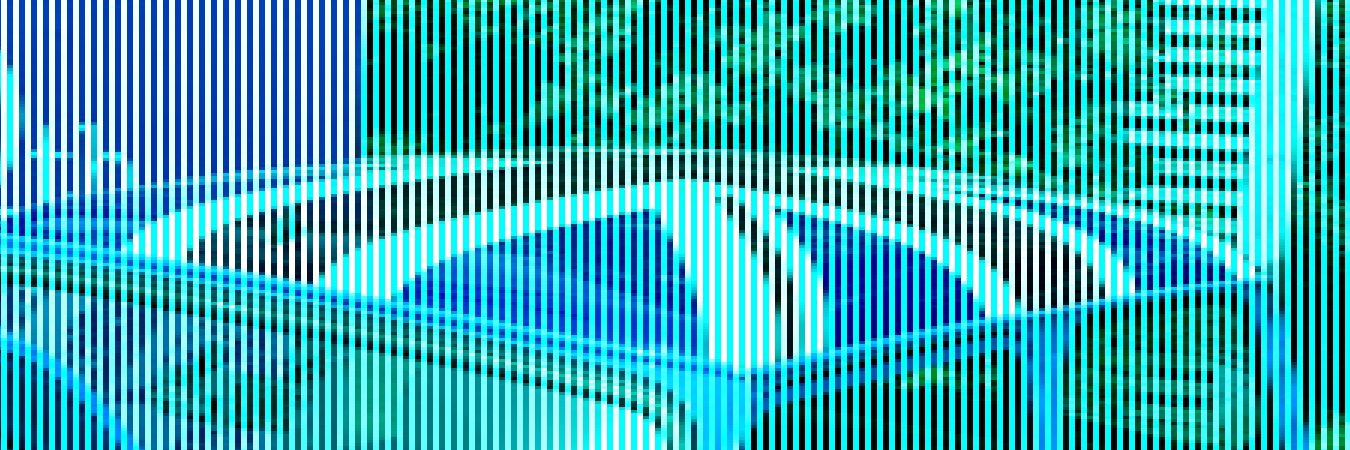
Let's make some
Spatial color mixing with two color lanes <September 25, 26, 27, October 13, 2022>
If you need color image, samples are available from sample_images.html.

"Illusory reddish Coca-Cola can"
Copyright Akiyoshi Kitaoka 2021 (October 13)

Illusory yellow is observed in the lower-right disk, but the color is white.
Eyes appear to be chromatic, though they consist of black and white stripes.
(12) Munker illusion from the viewpoint of spatial color mixng
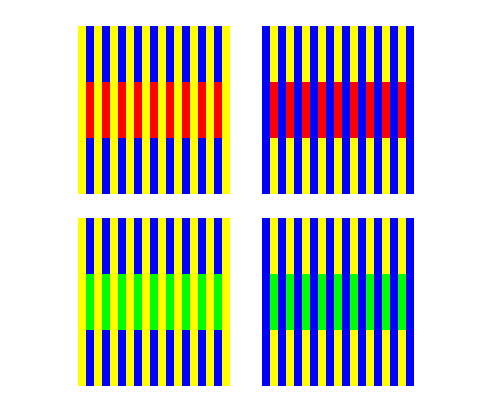
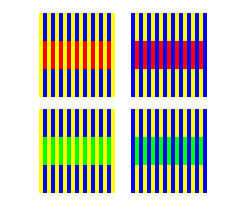
Munker, H. (1970) Farbige Gitter, Abbildung auf der Netzhaut und übertragungstheoretische Beschreibung der Farbwahrnehmung. München: Habilitationsschrift. Munker illusion
Copyright Akiyoshi Kitaoka 2015 (June 2)
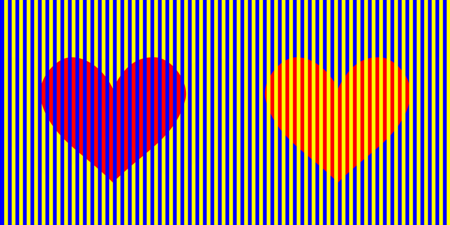
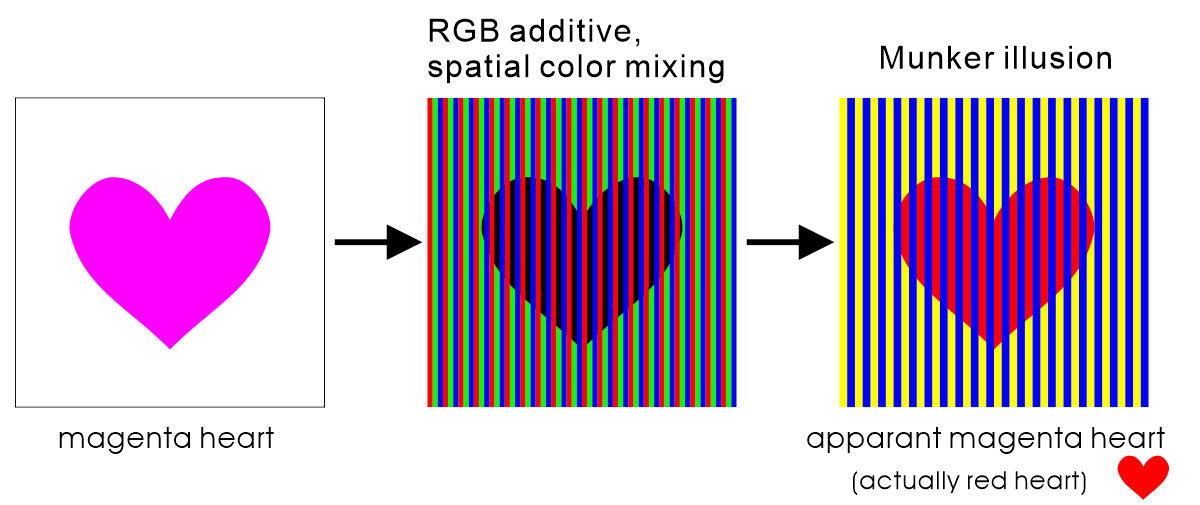
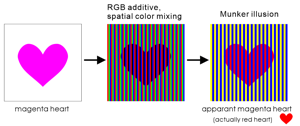
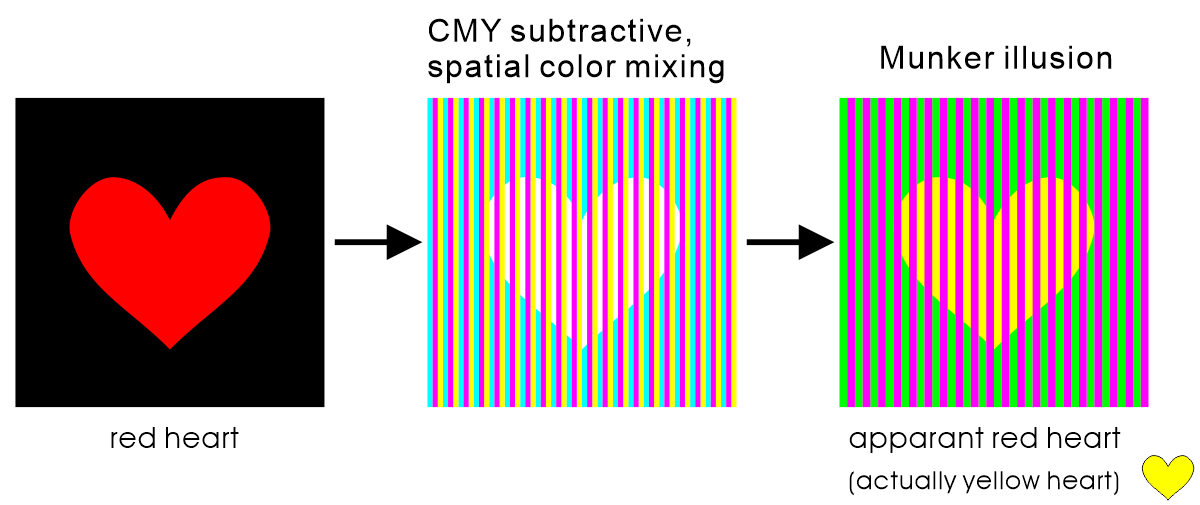
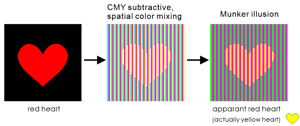
Table of correspondence between the Munker illusion and spatial color mixing
Click the image, then a high-resolution image is downloaded.
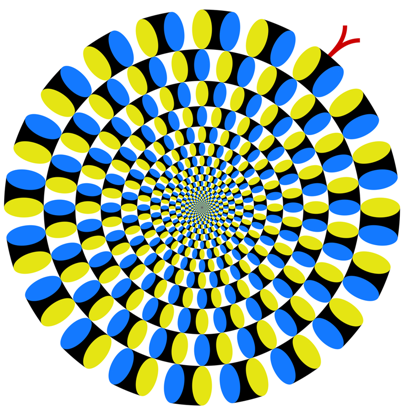 My sugestion: The Munker illusion can be explained in terms of spatial
color mixing.
My sugestion: The Munker illusion can be explained in terms of spatial
color mixing.
Concluding remark
If three appropriate colors are chosen, a wide variety of colors can be represented by color mixing. PC, smartphone, and TV displays employ red, green, and blue (RGB) as primary colors, spatially juxtaposed as sub-pixels (spatial color mixing). These sub-pixels are implemented at a fineness below the discrimination threshold, but even if they are represented at a size that allows the elements to be recognized, the original image can still be perceived within a certain range. Under these conditions, by introducing a new technique of additive color mixing of other primary colors to the subpixels, it was found that some of the color illusions (the Munker illusion and a new group of color illusions) can be explained as a series of phenomena.
色は適切な3色を選べば、混色によって多彩な色を表現できる。PC、スマホ、テレビ等のディスプレイでは、赤・緑・青(RGB)の3色を原色として、空間的に並置されたサブピクセルとして採用している(並置混色)。これらのサブピクセルは弁別閾以下の細かさで実装されているが、要素がわかるような大きさで表現しても、一定の範囲内であれば元の画像を知覚できる。この条件で、サブピクセルに他の原色を加法混色させるという新しい技法を導入することで、色の錯視のいくつか(ムンカー錯視や新しい色の錯視群)を一連の現象として説明できることがわかった。
p.s.
この講演と内容がほぼ同じ日本語版サイト(Japanese webpage)
Demos of temporal color mixing
My explanation of the color illusion based on color constancy
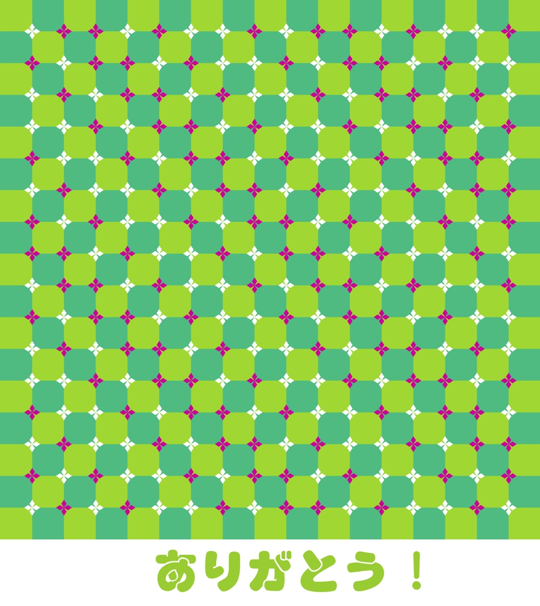
Thank you!



since February 23, 2023